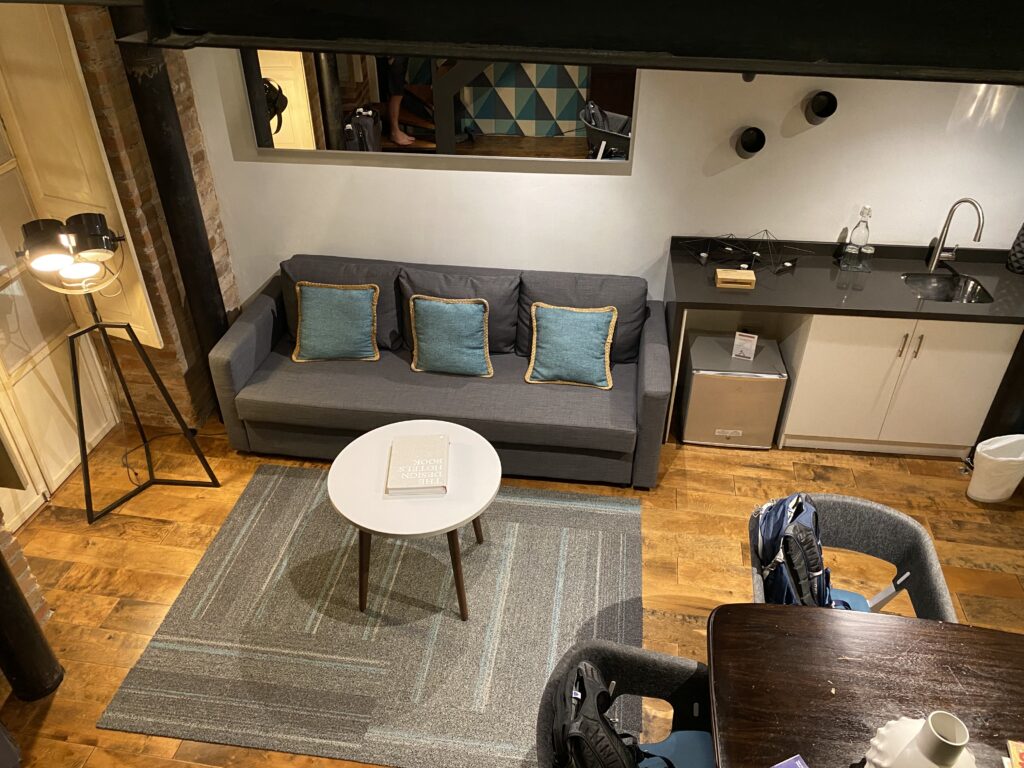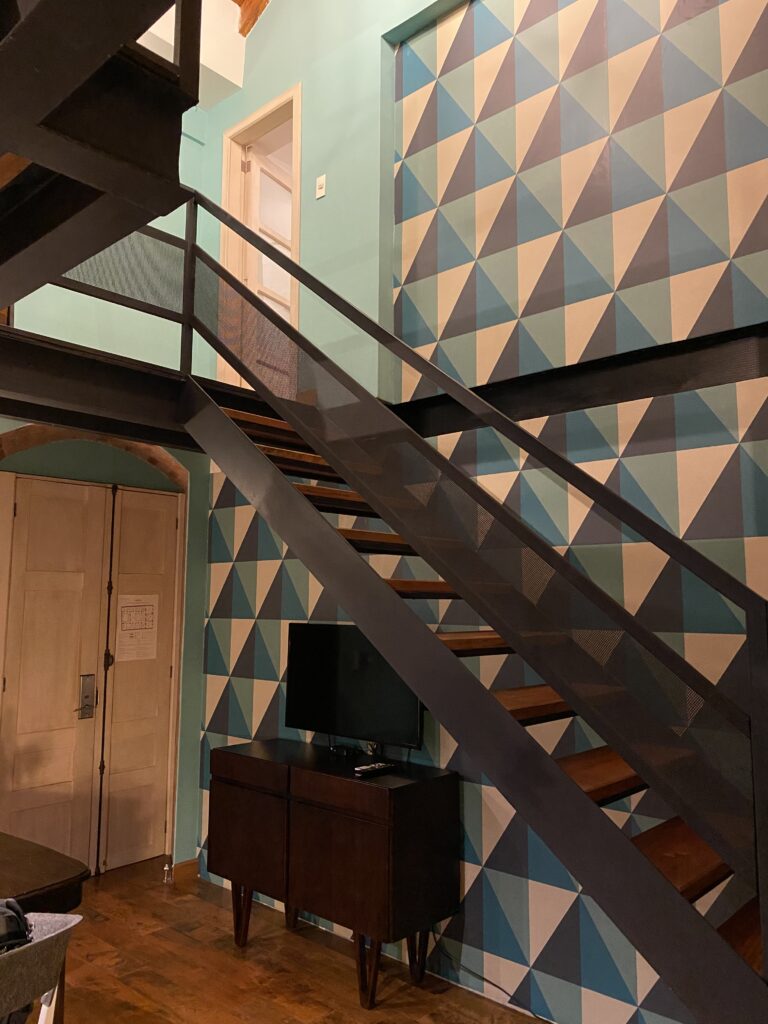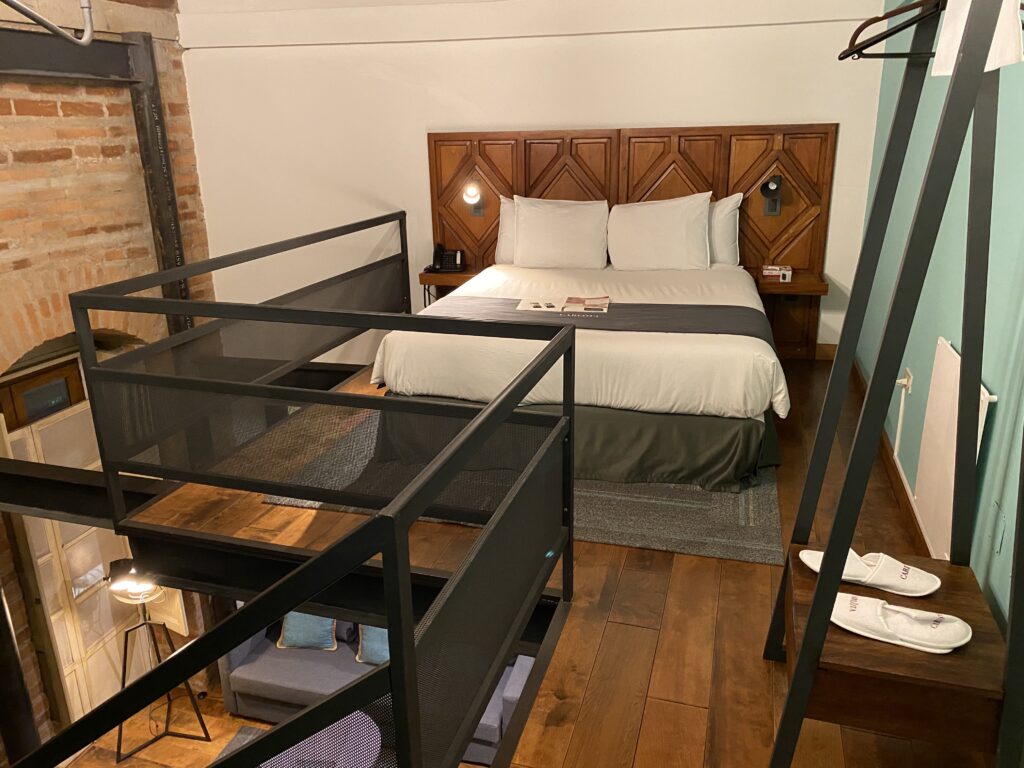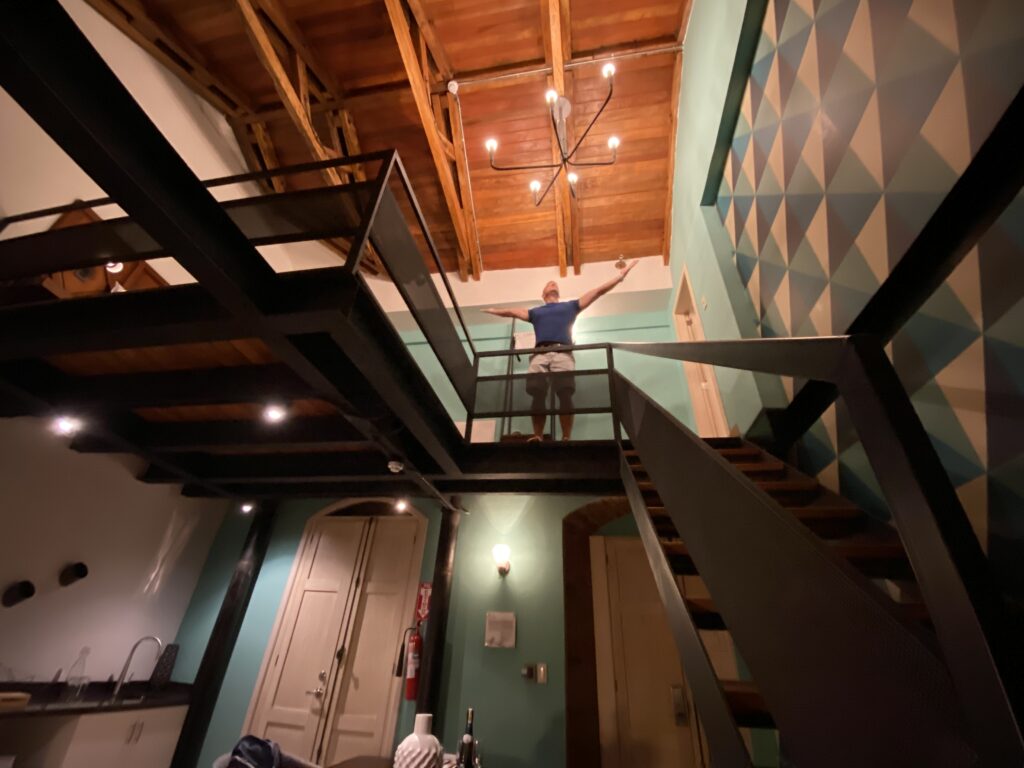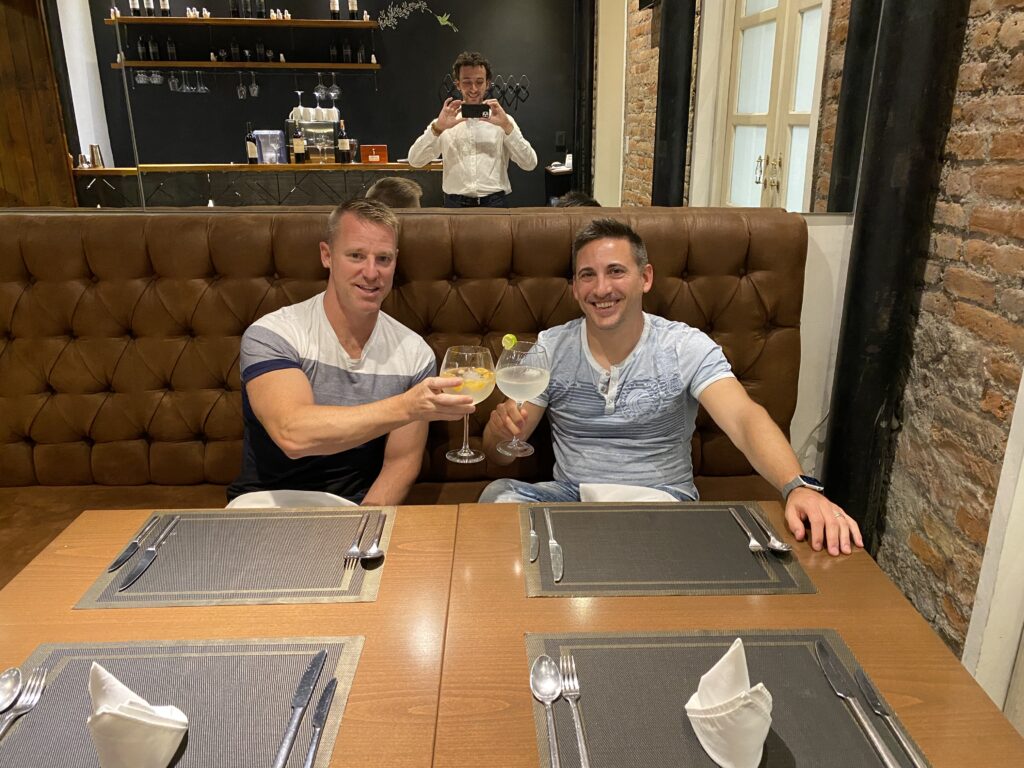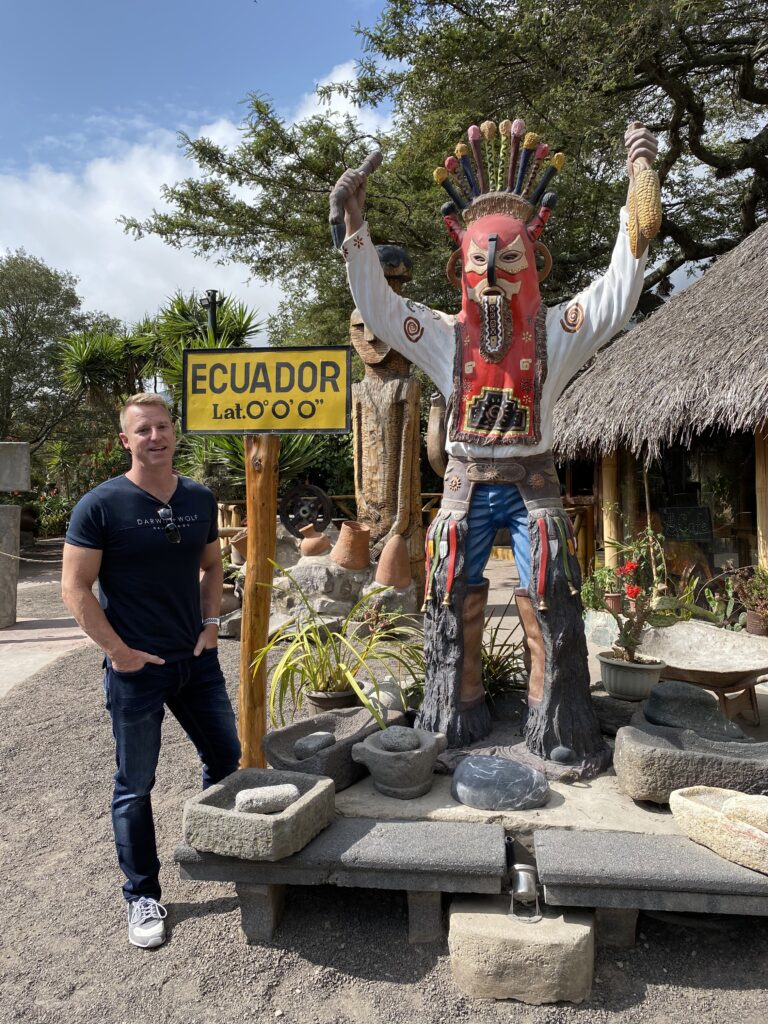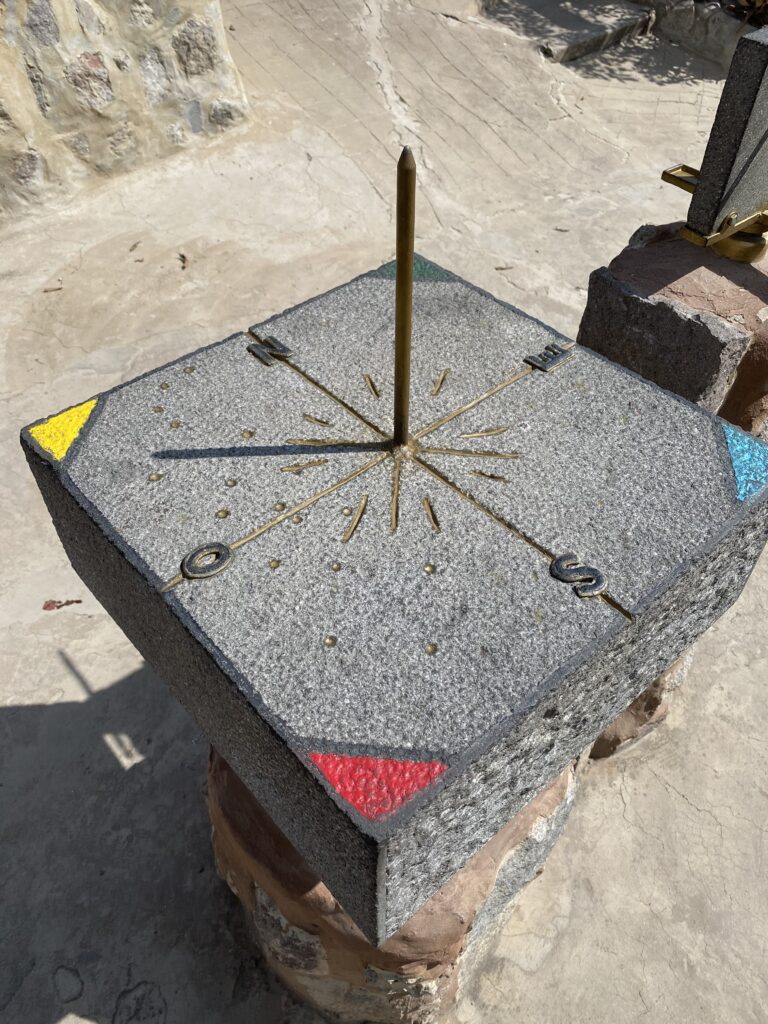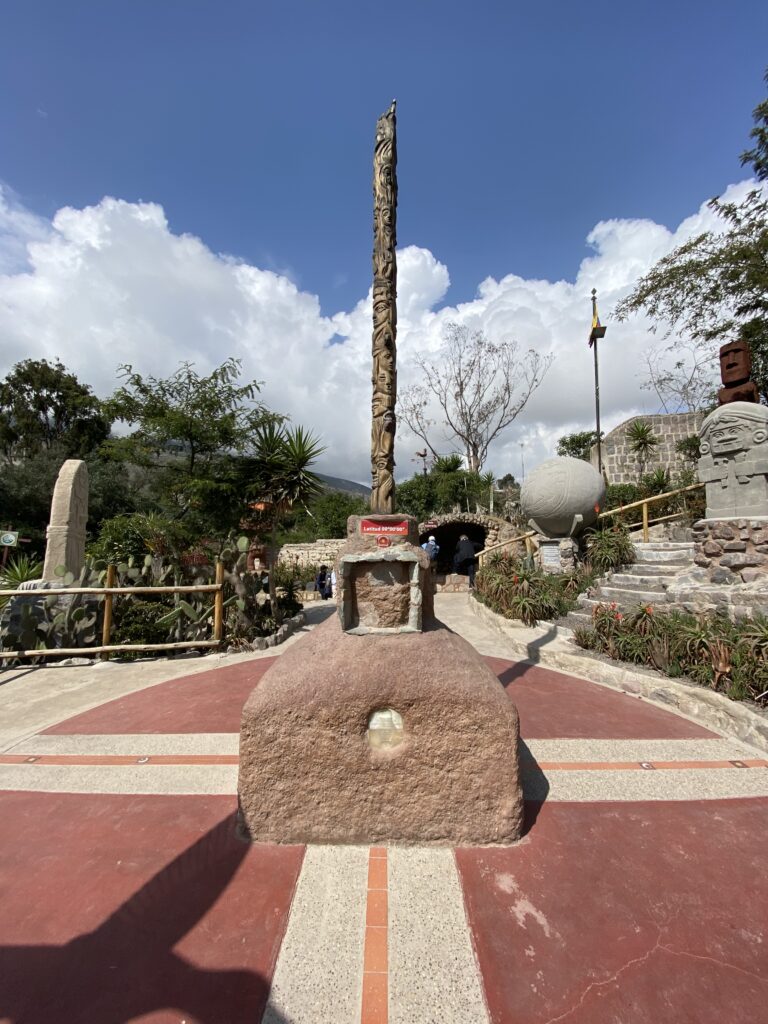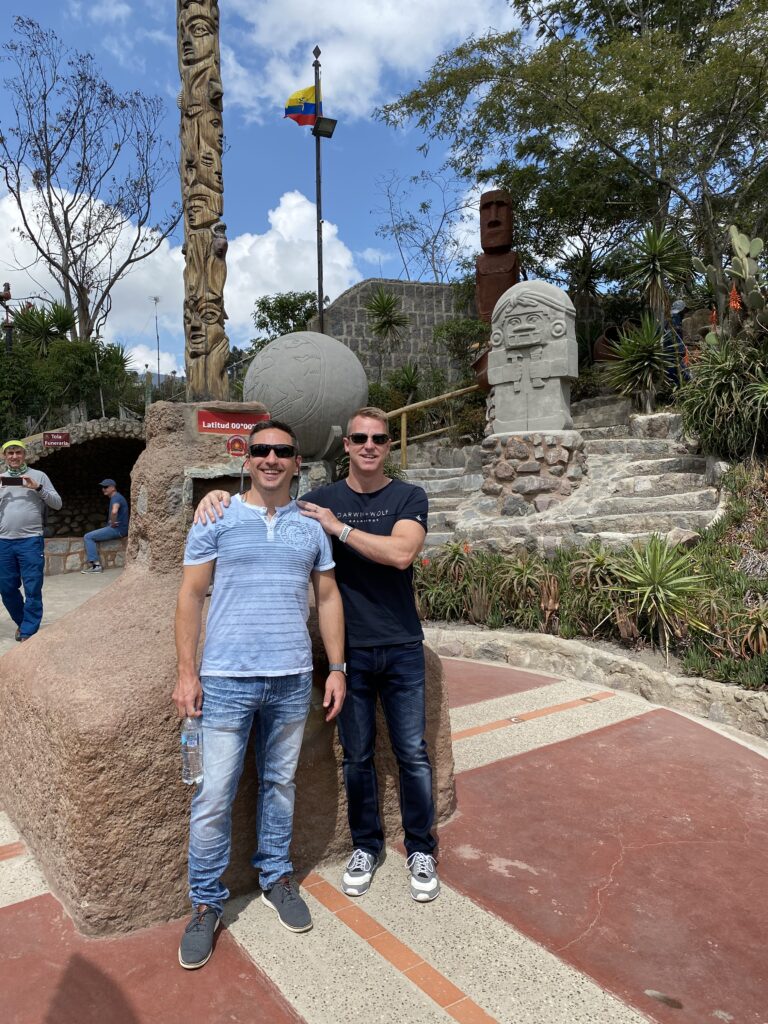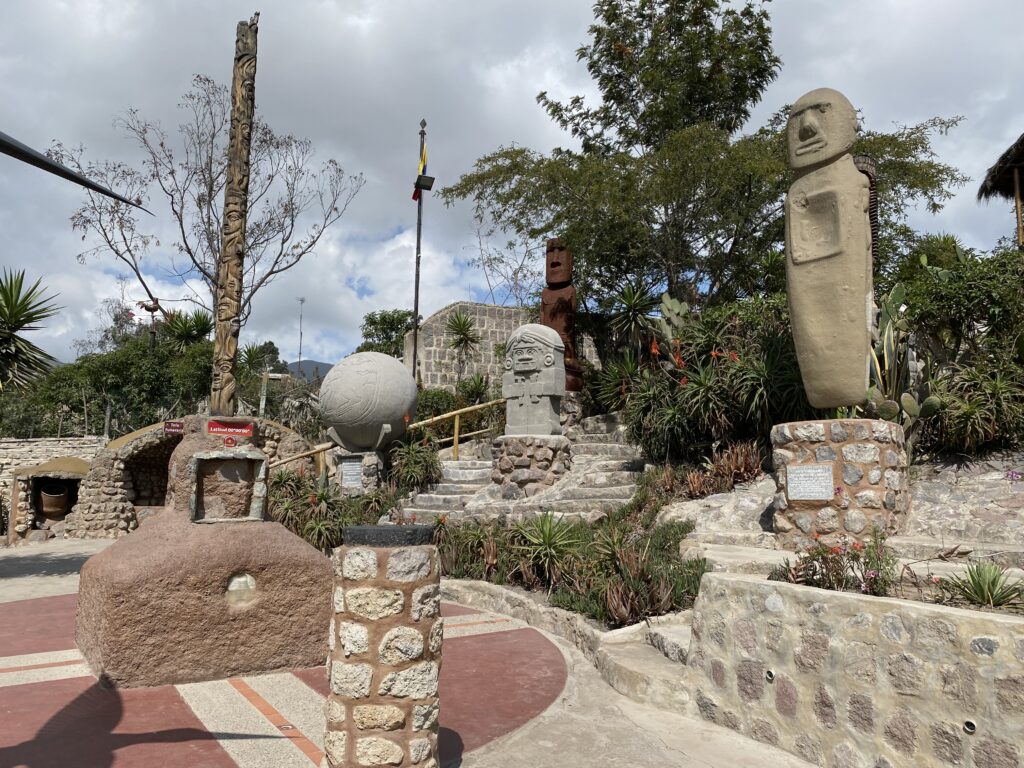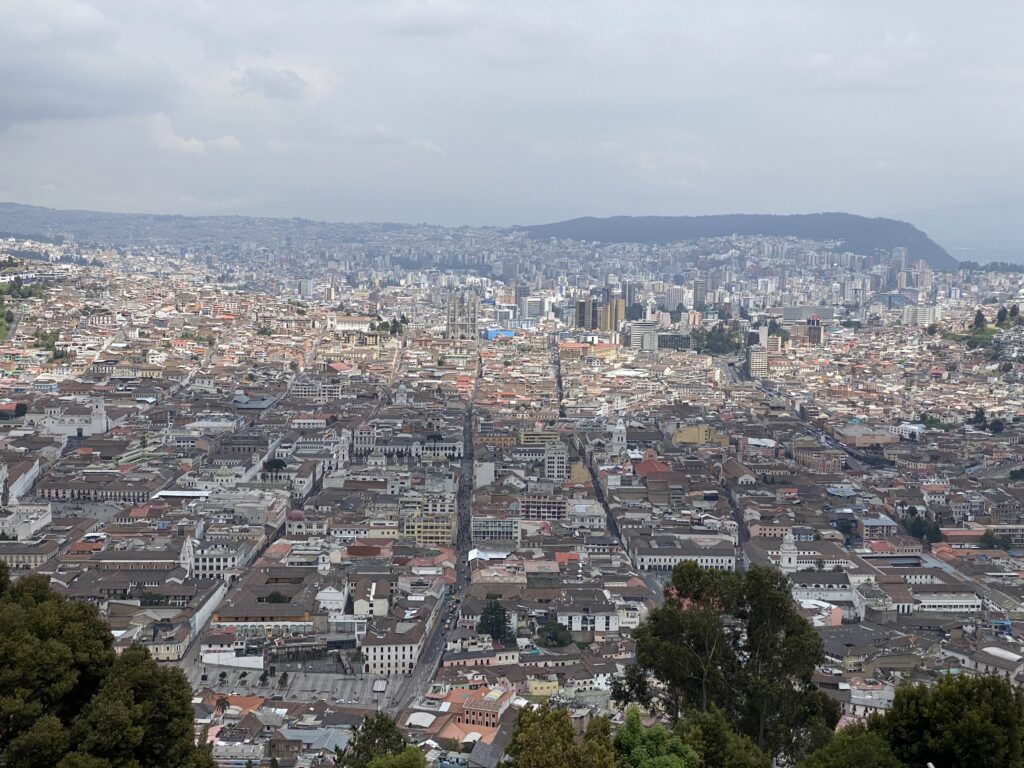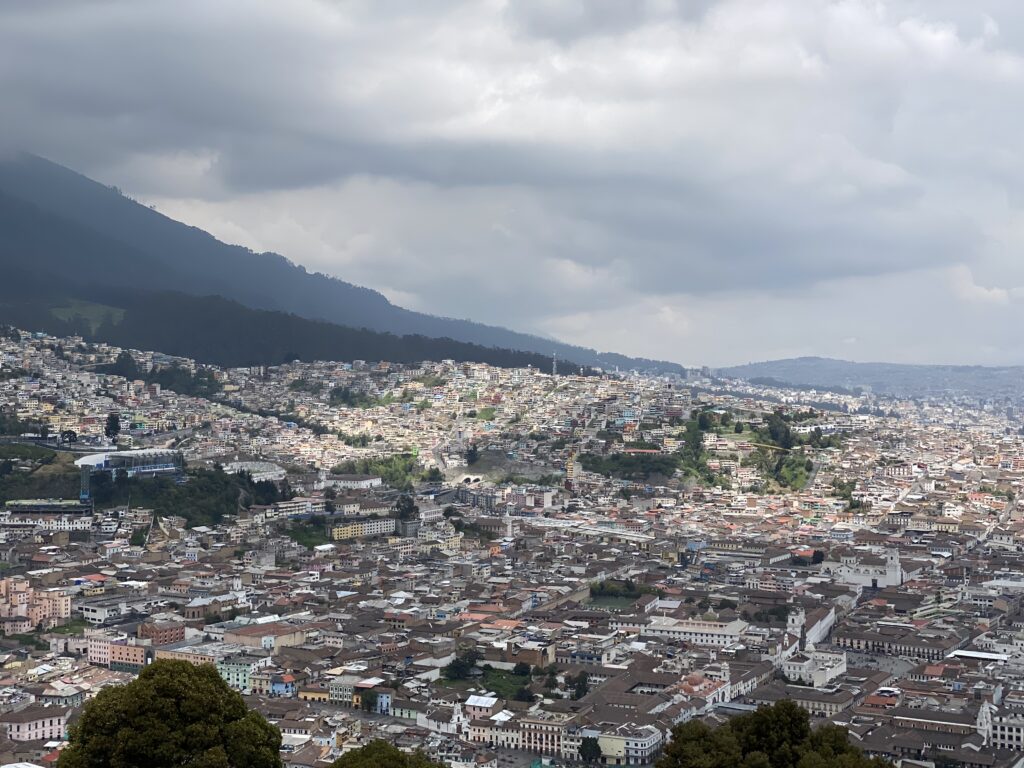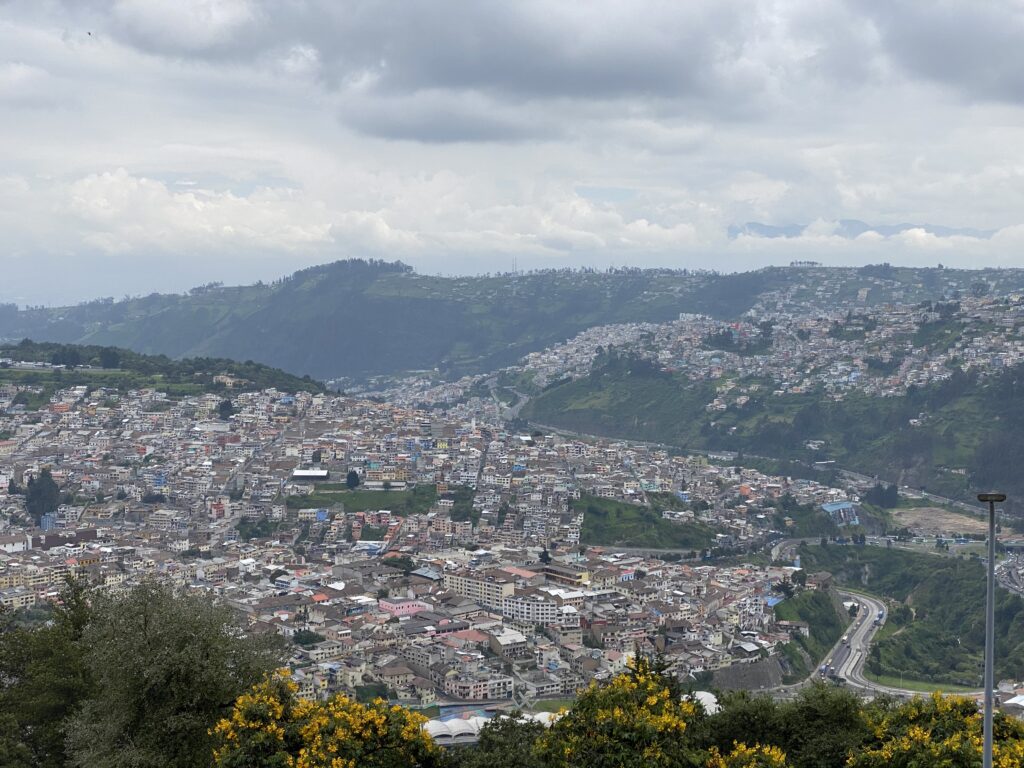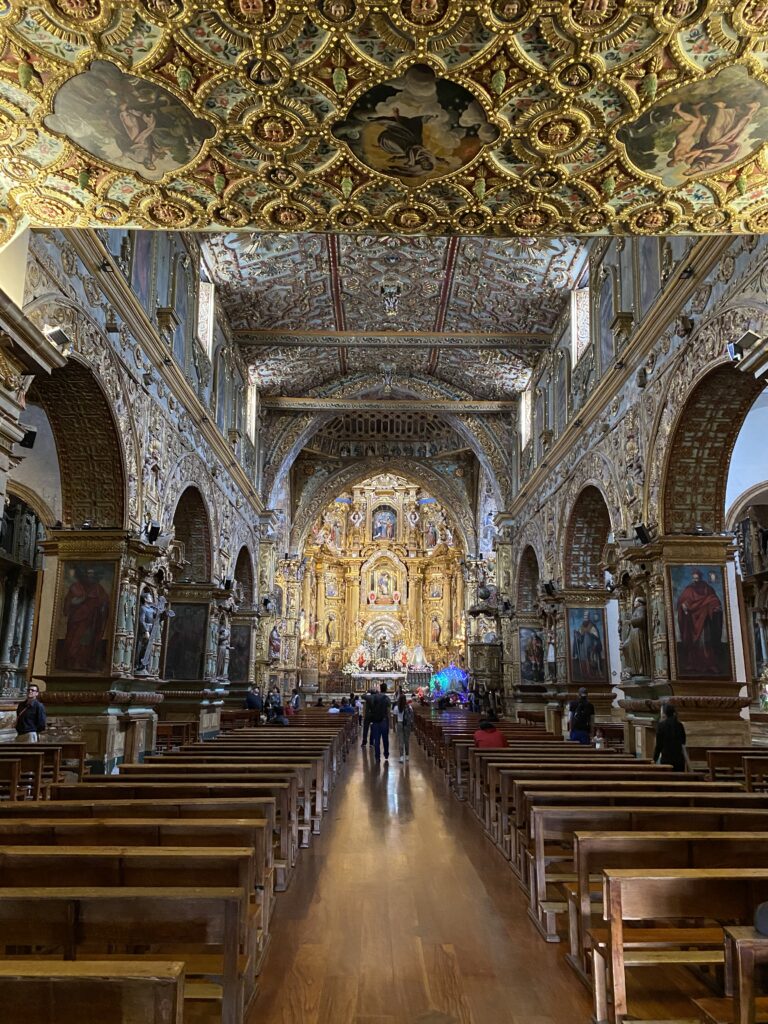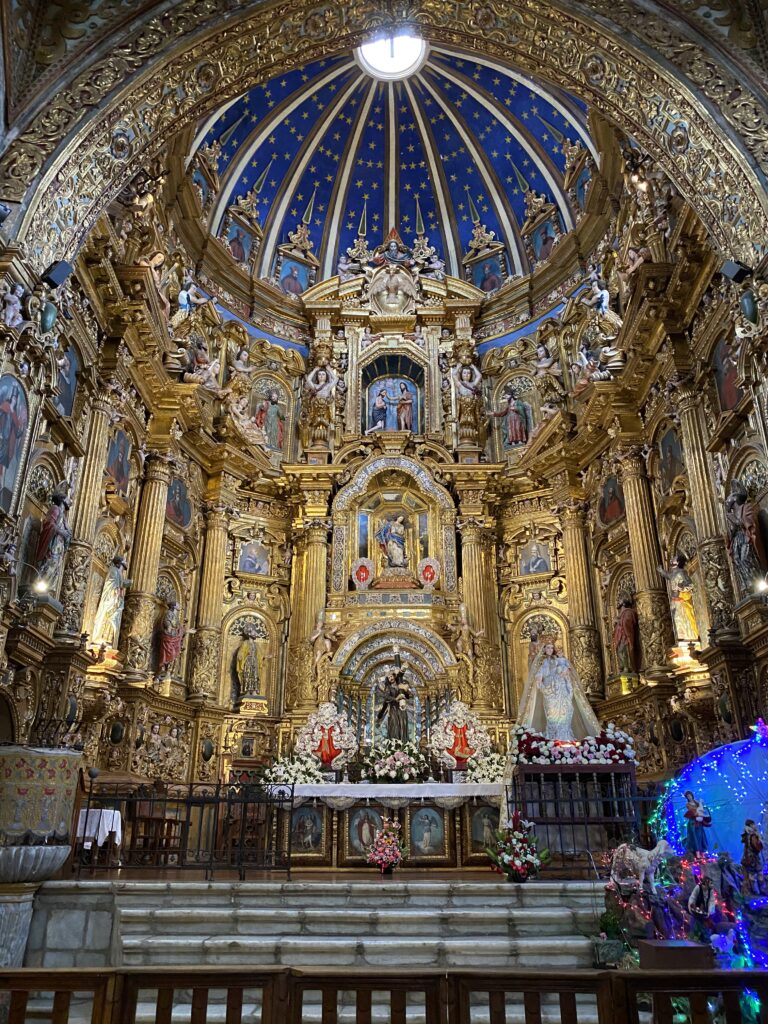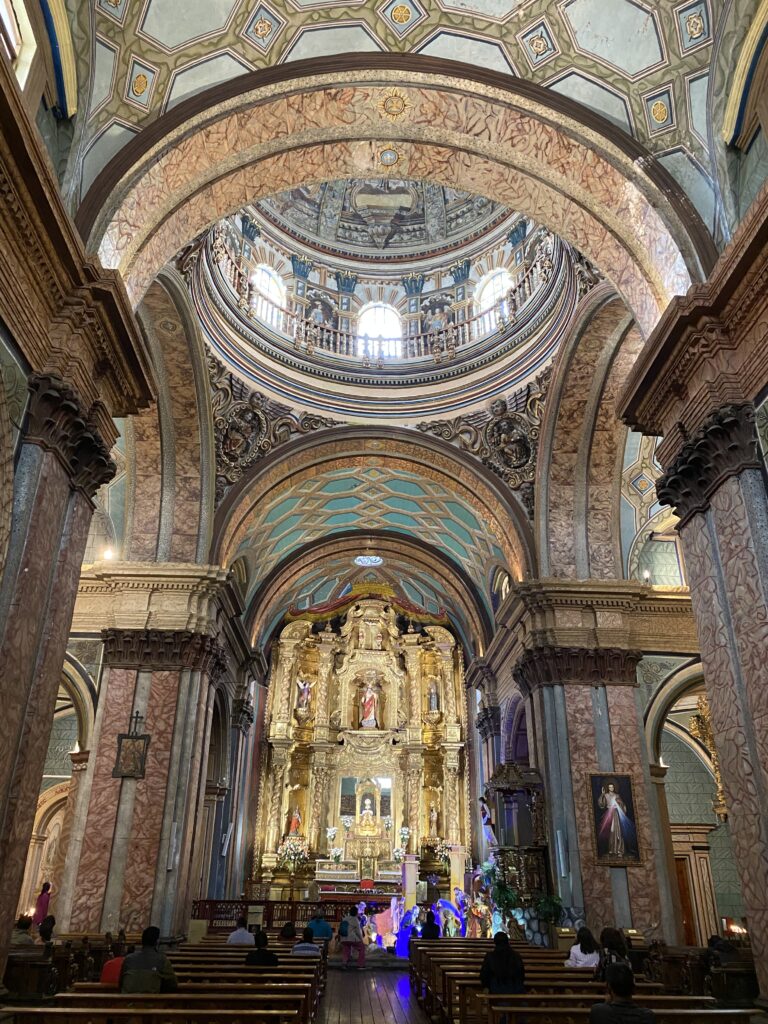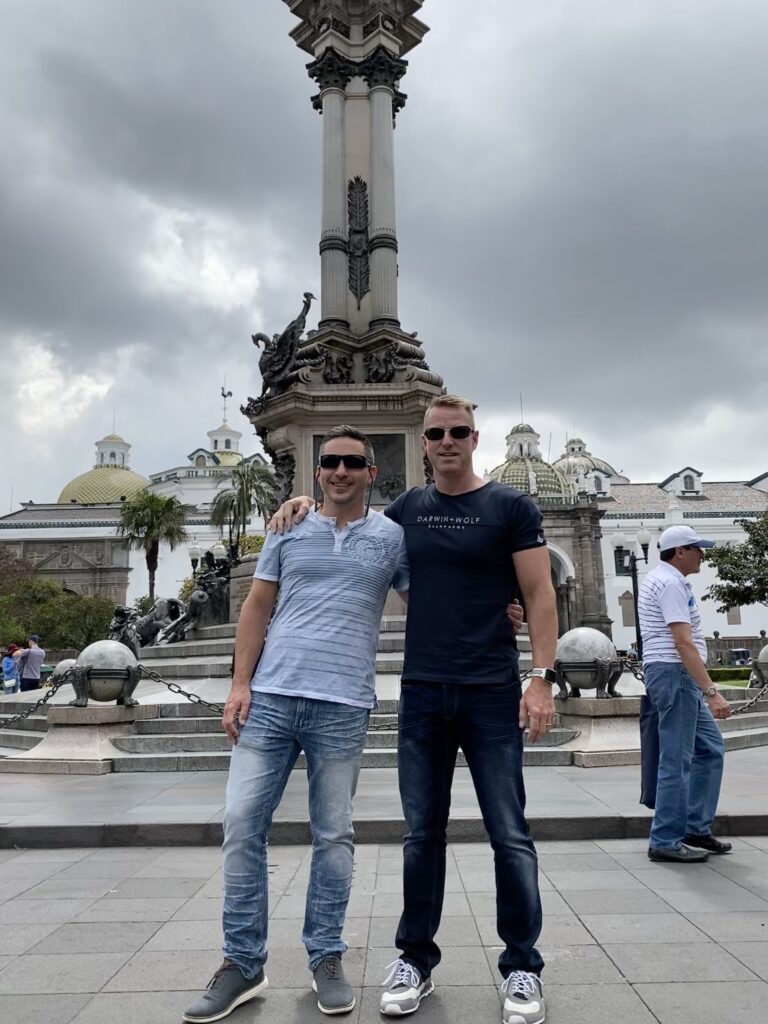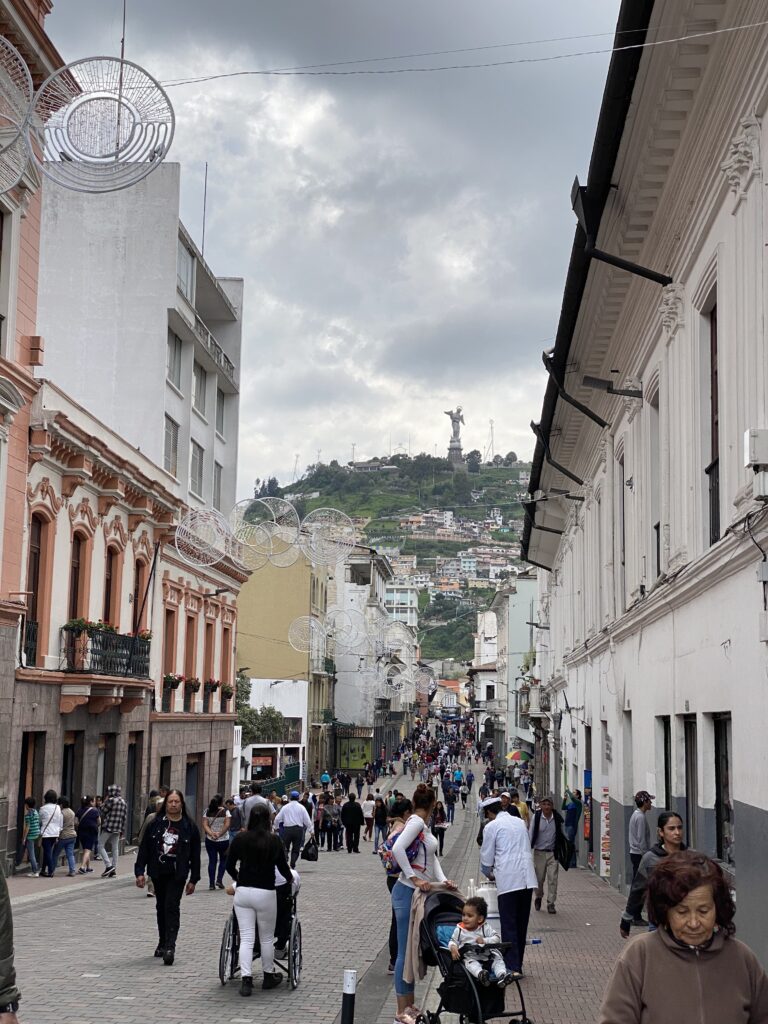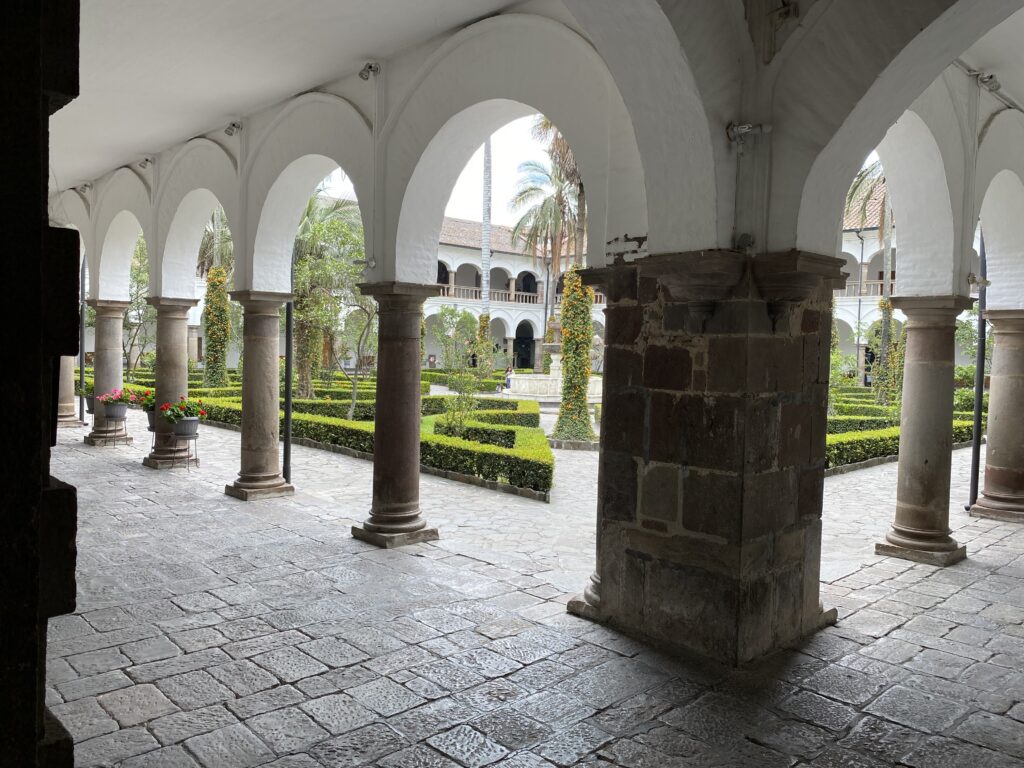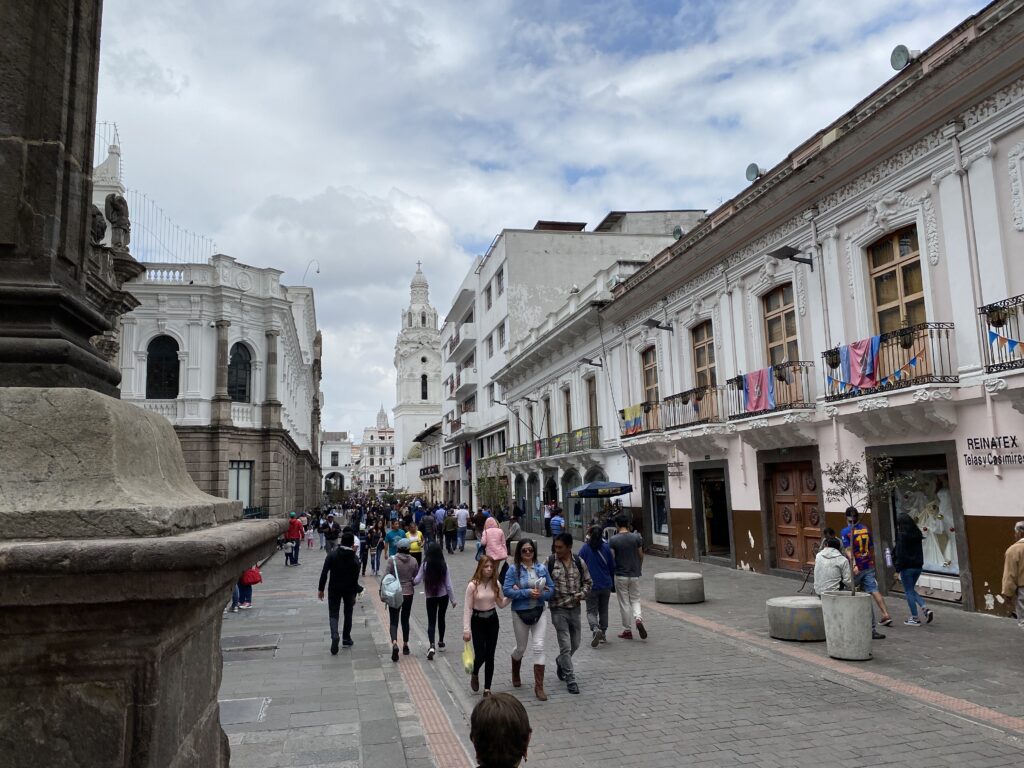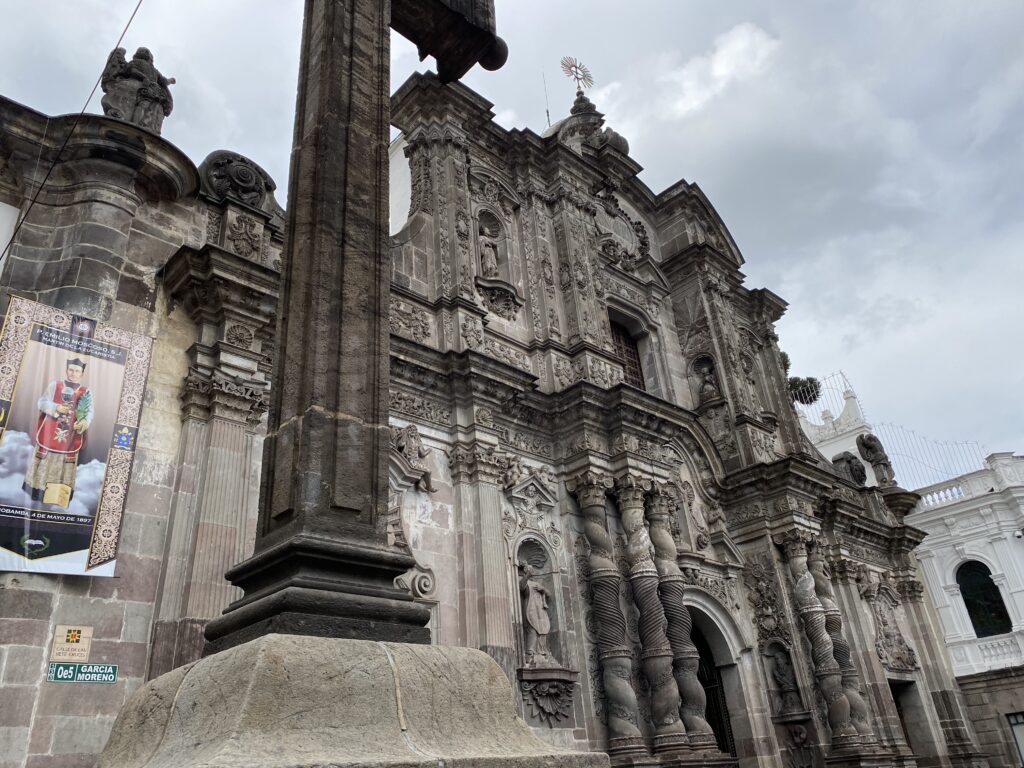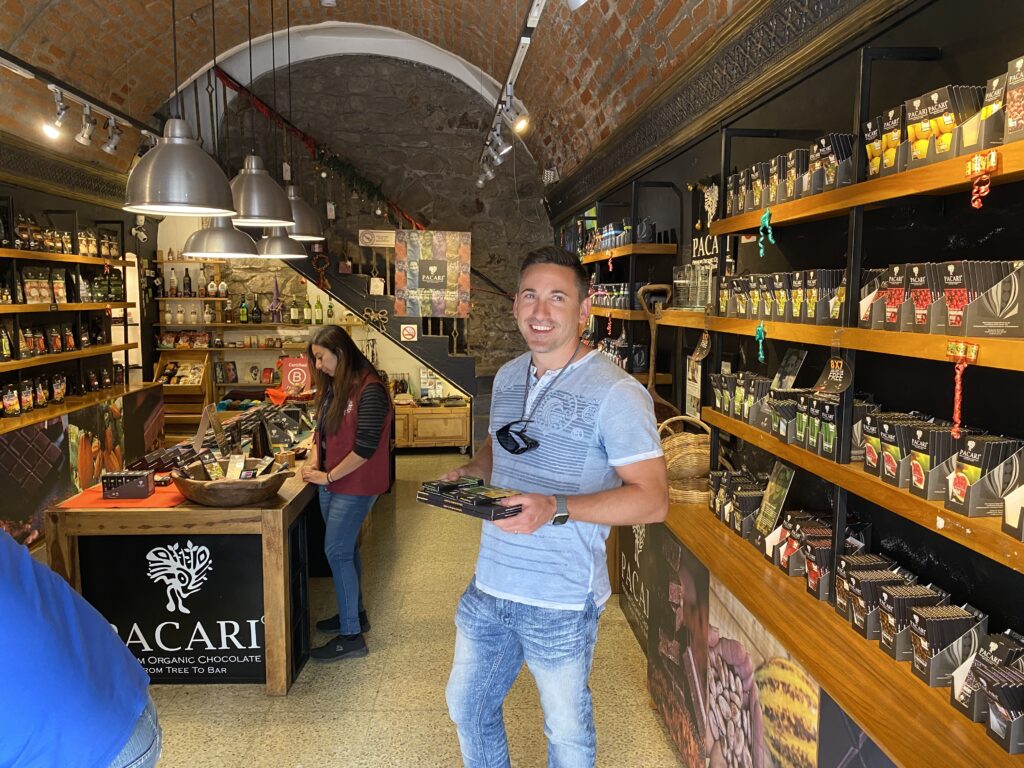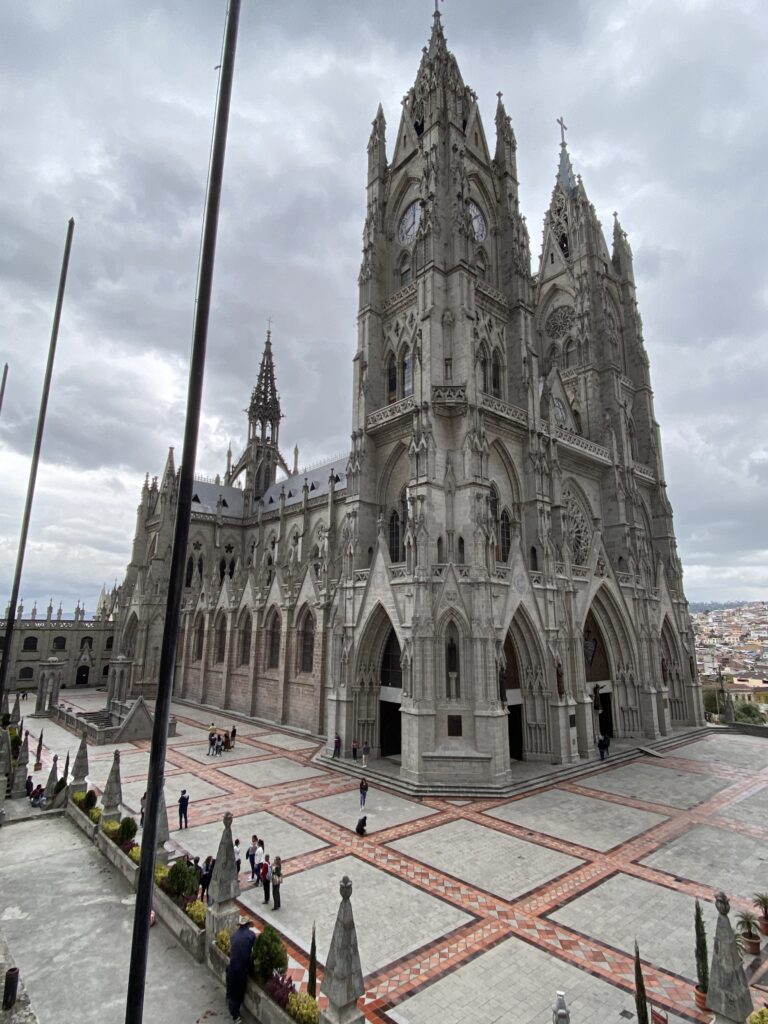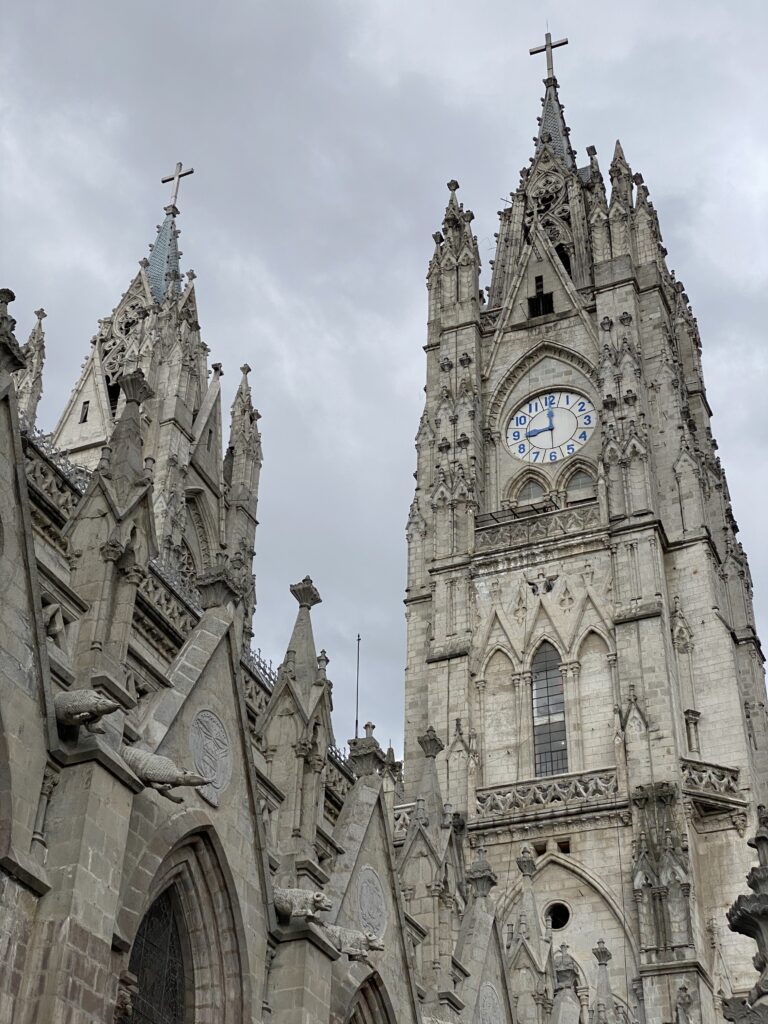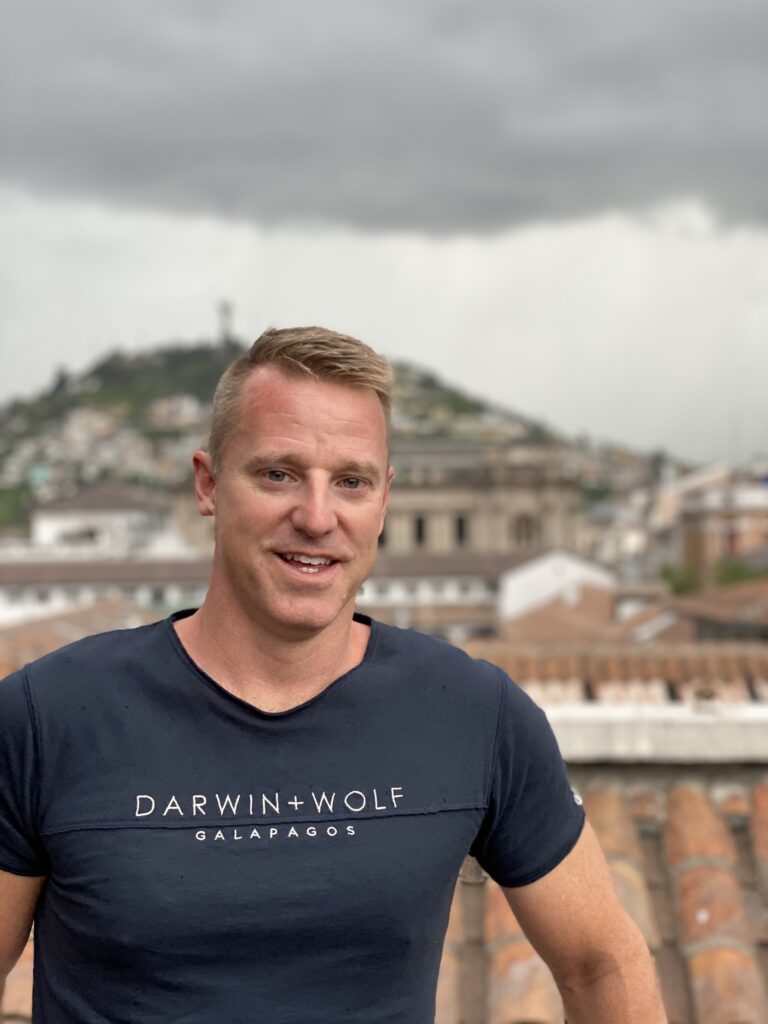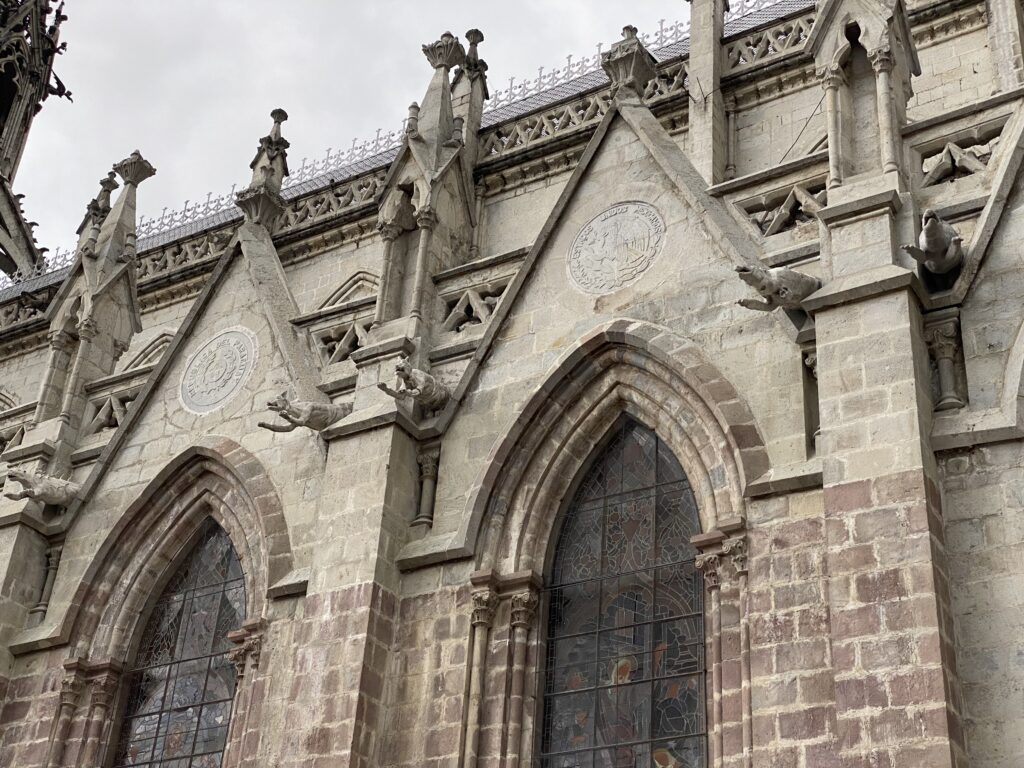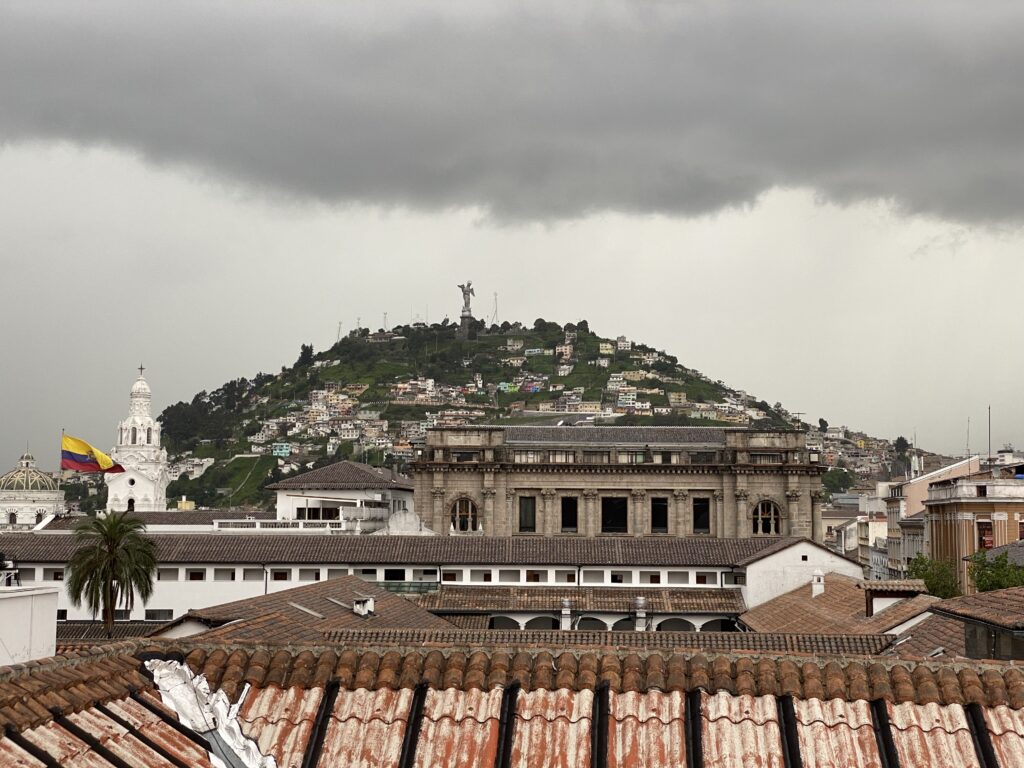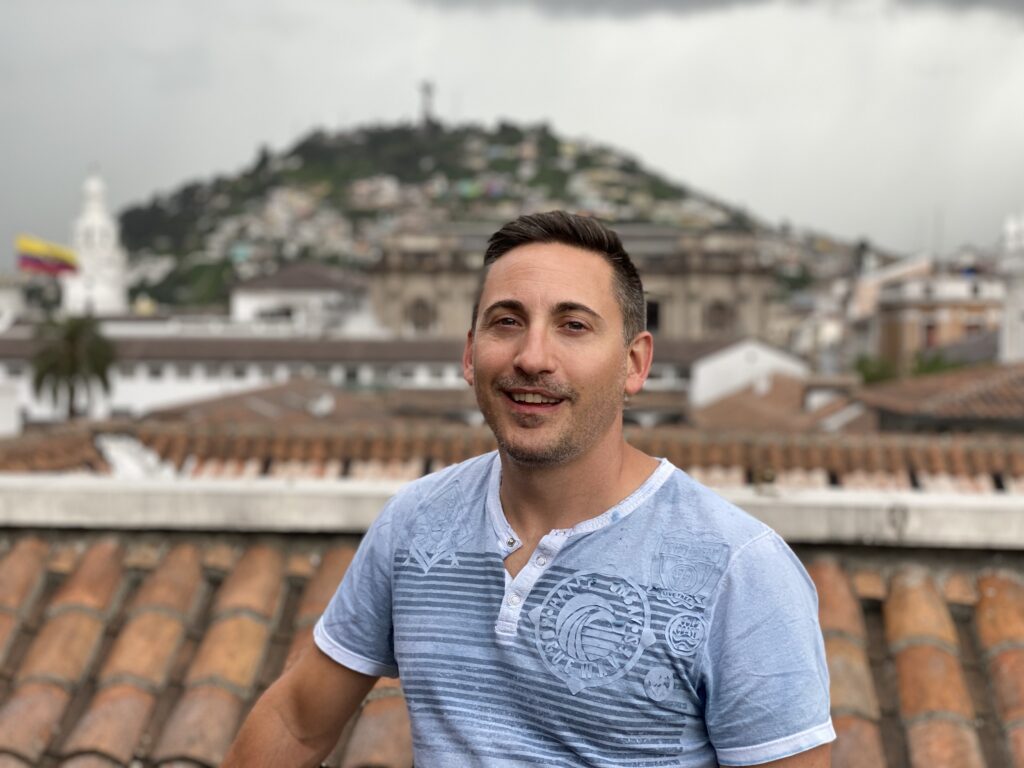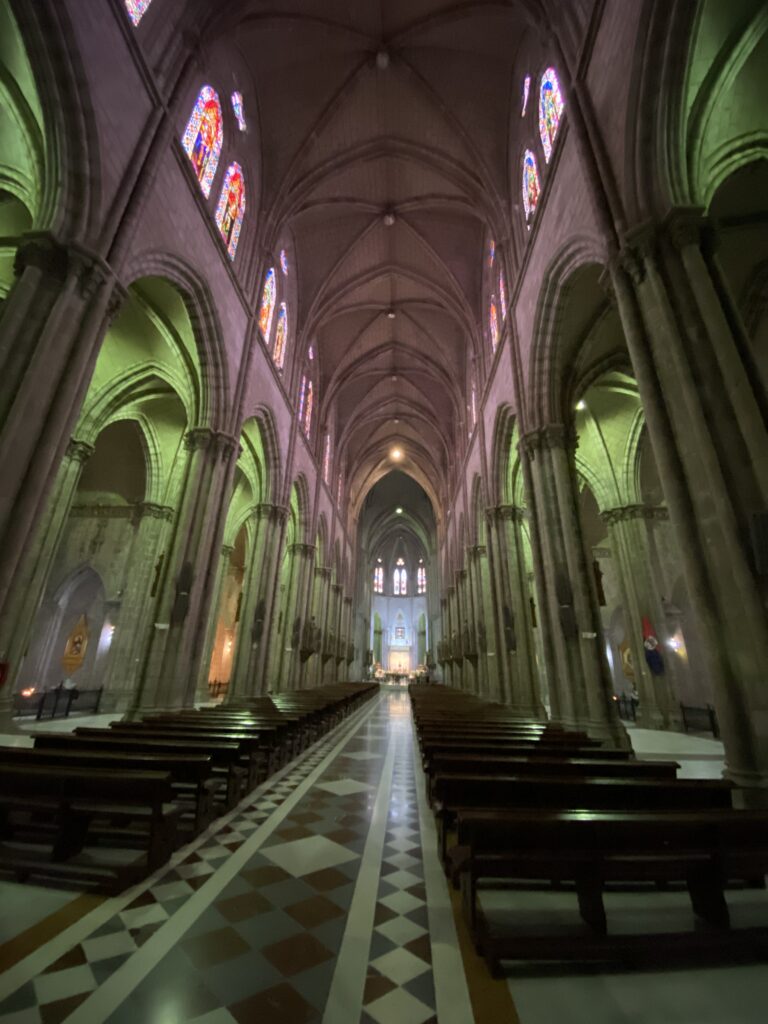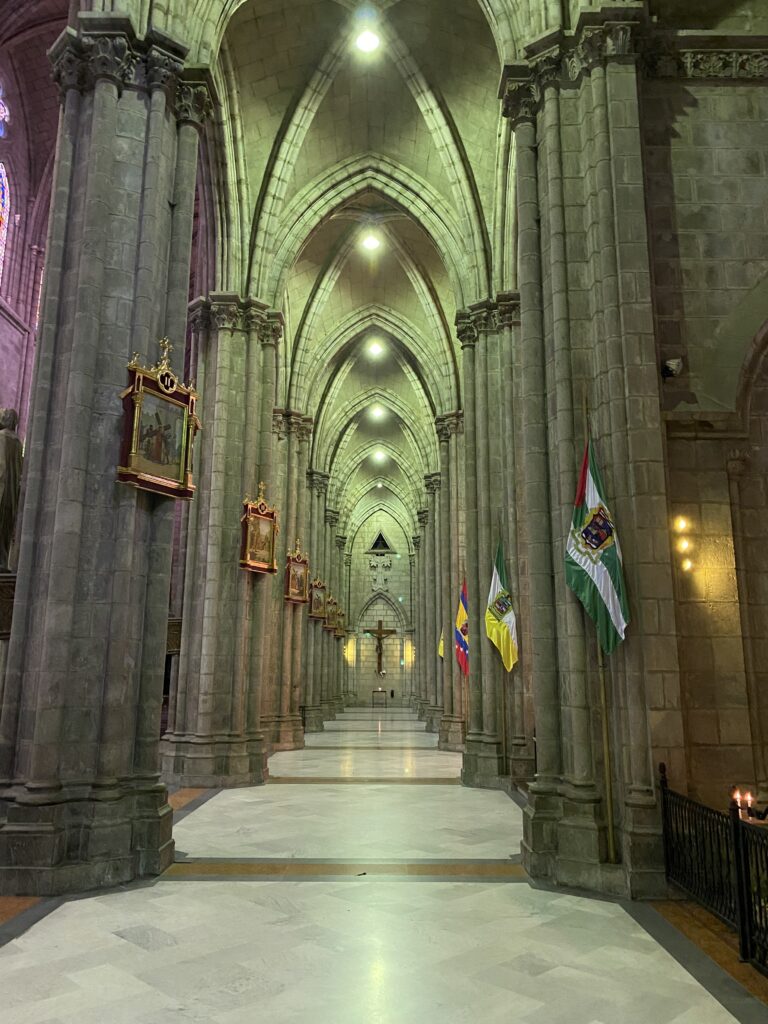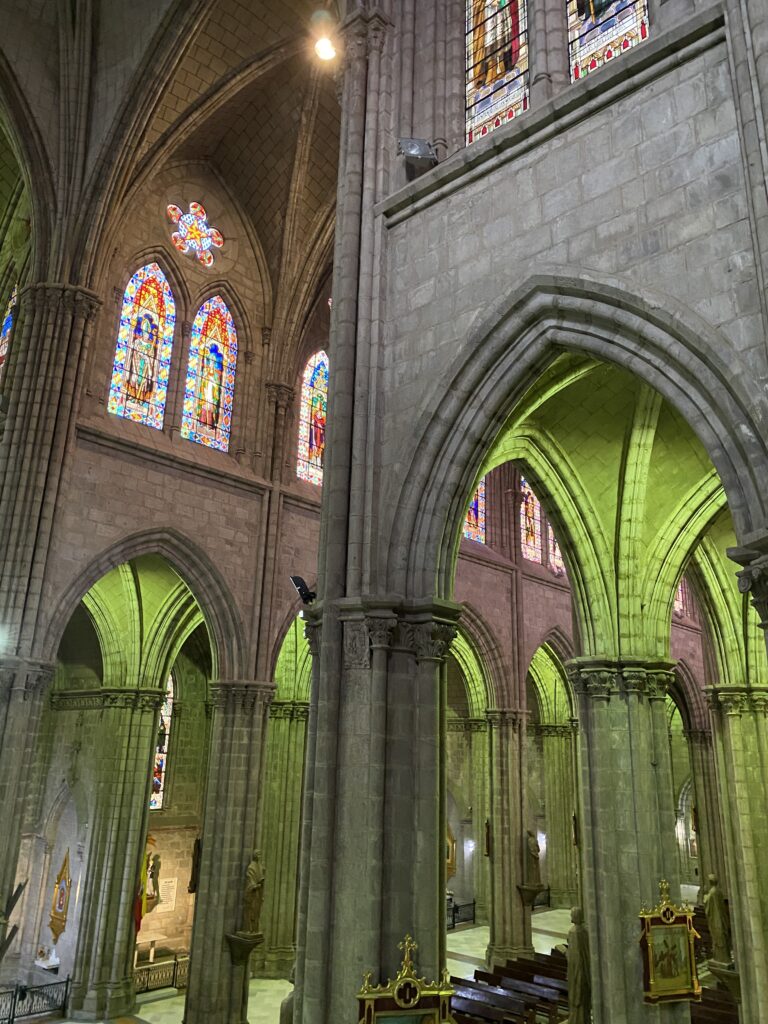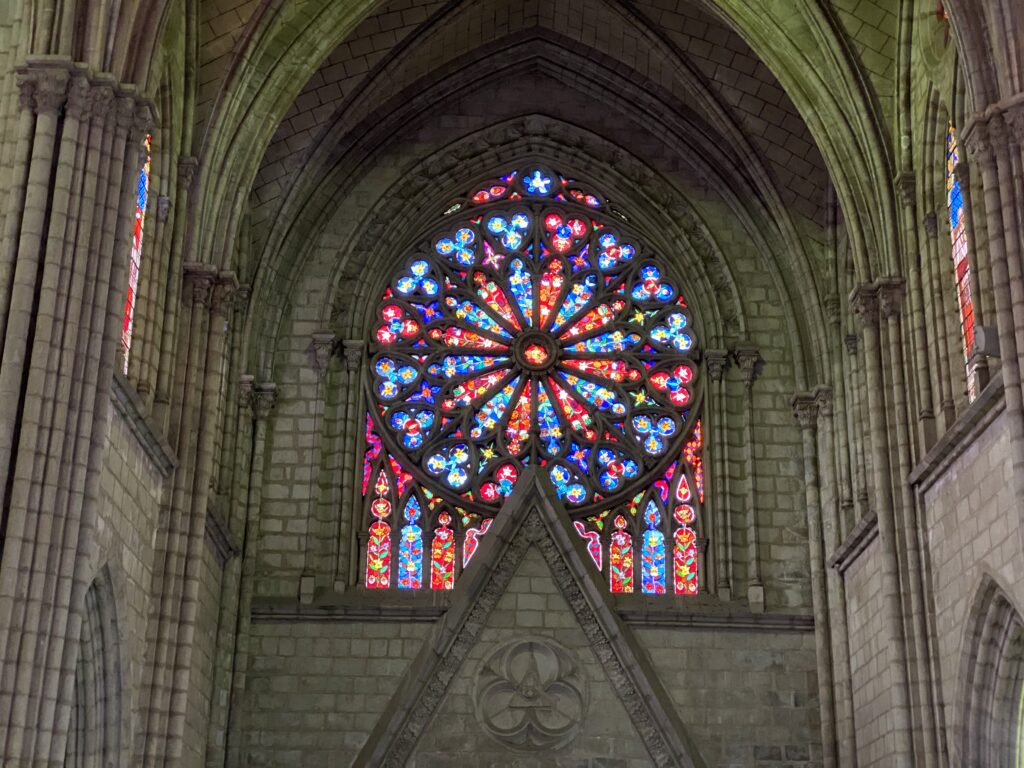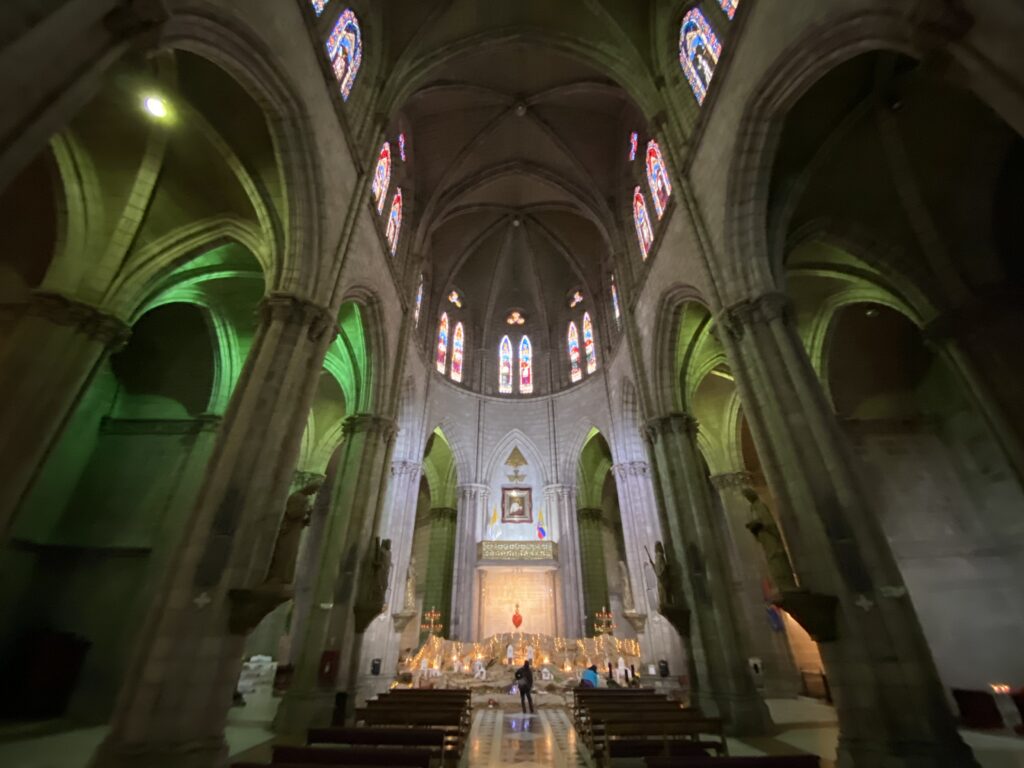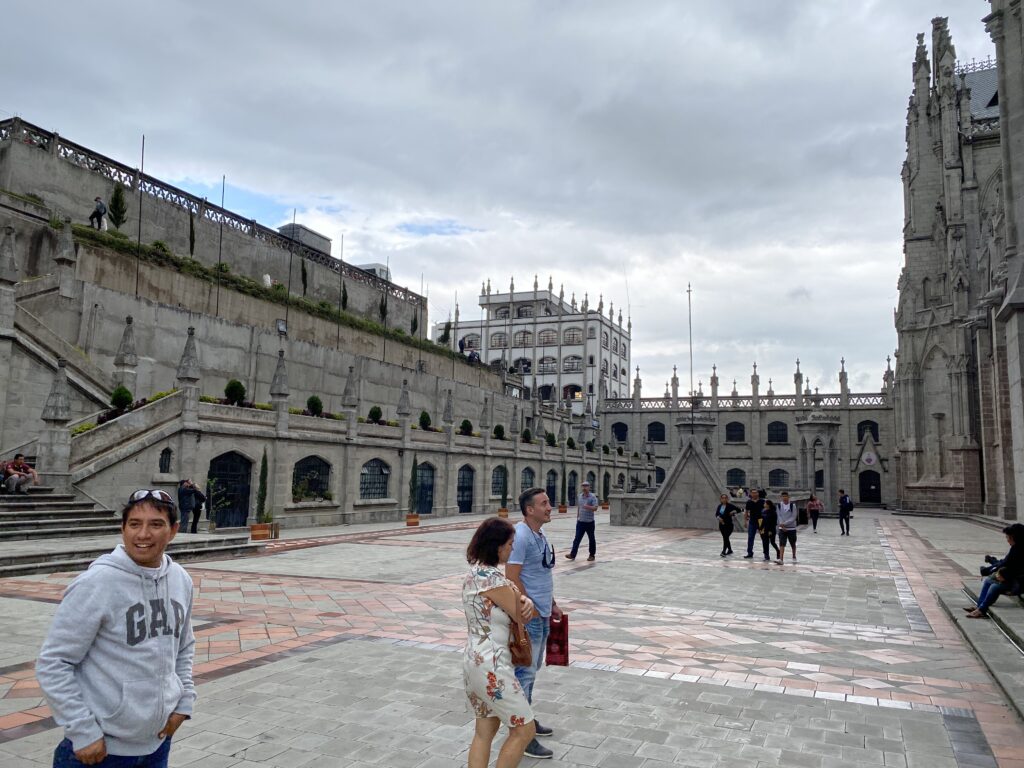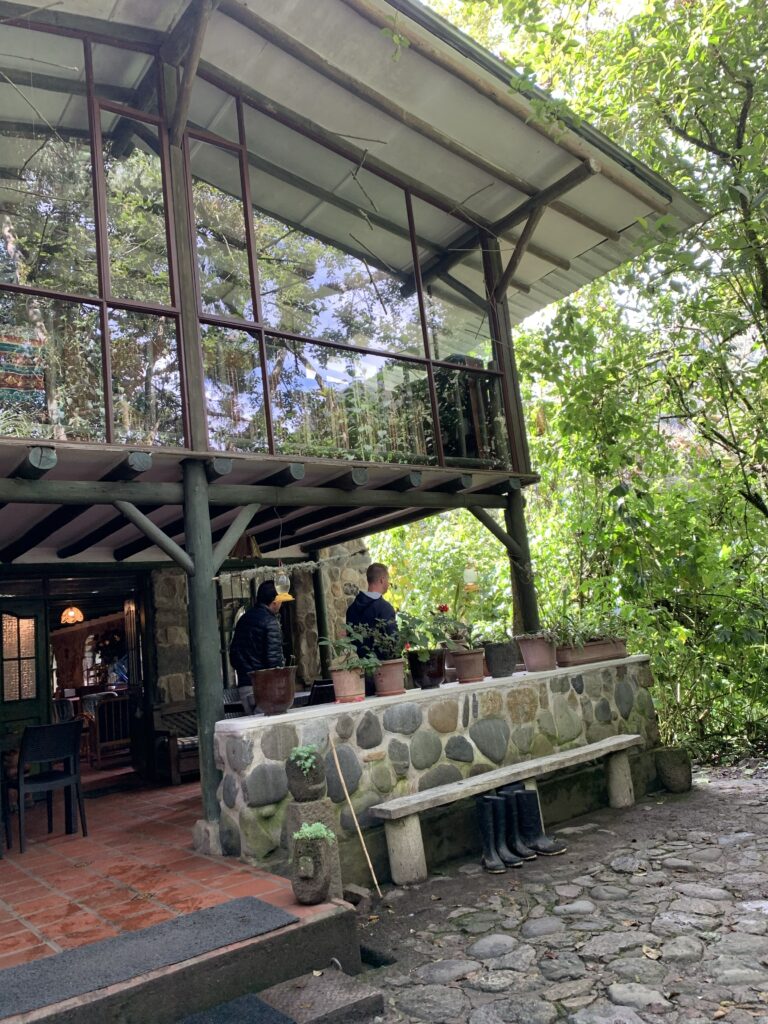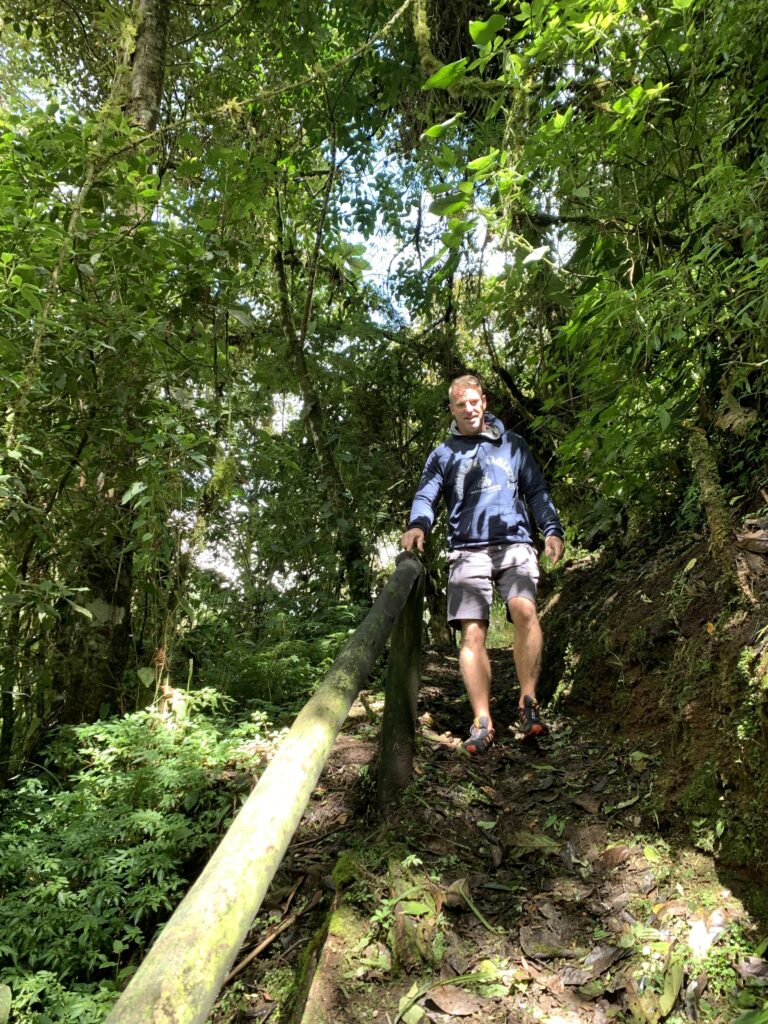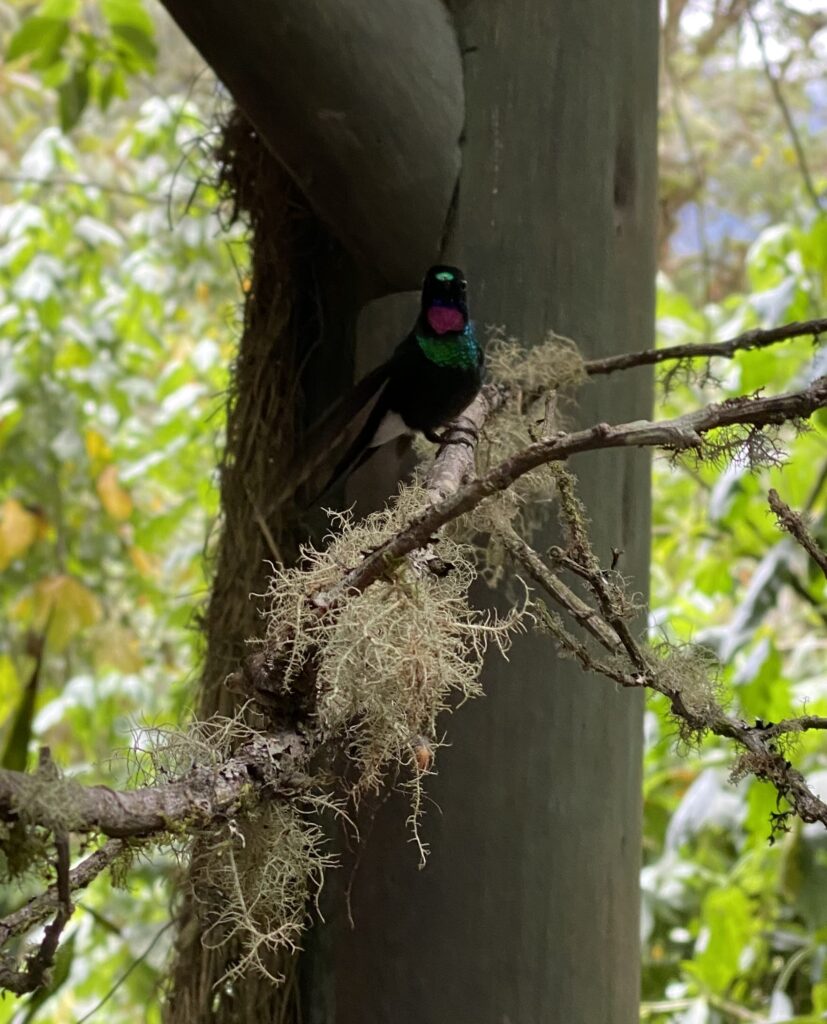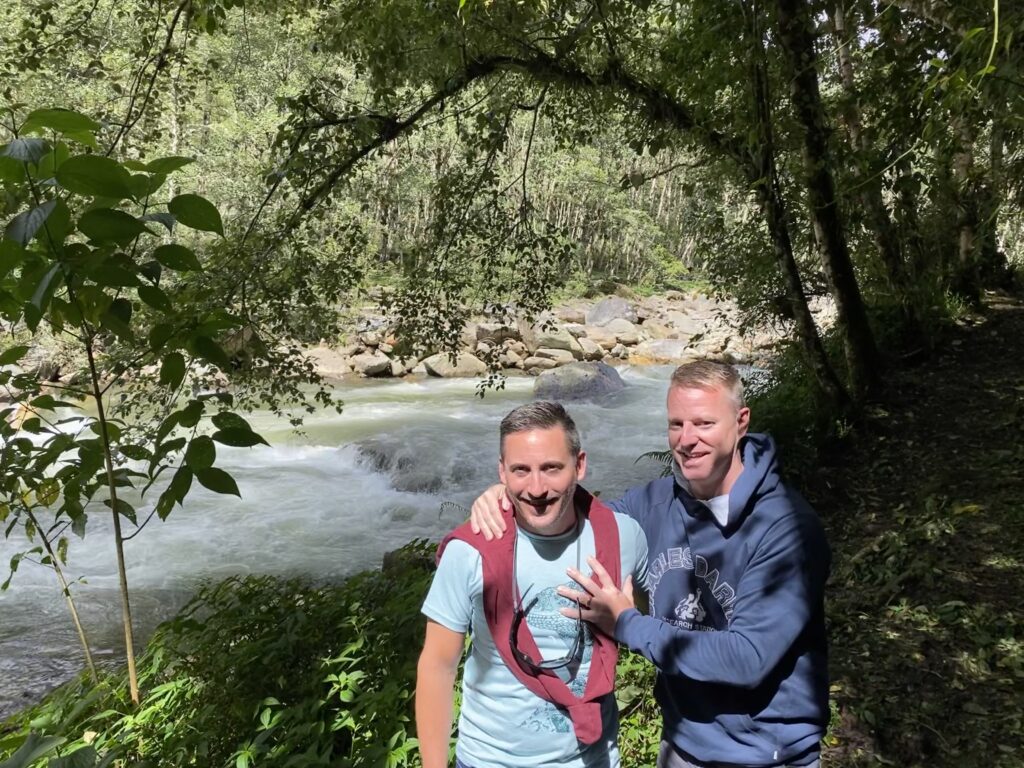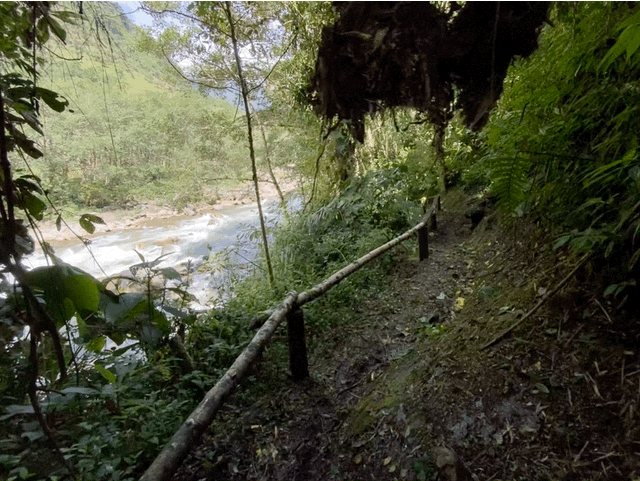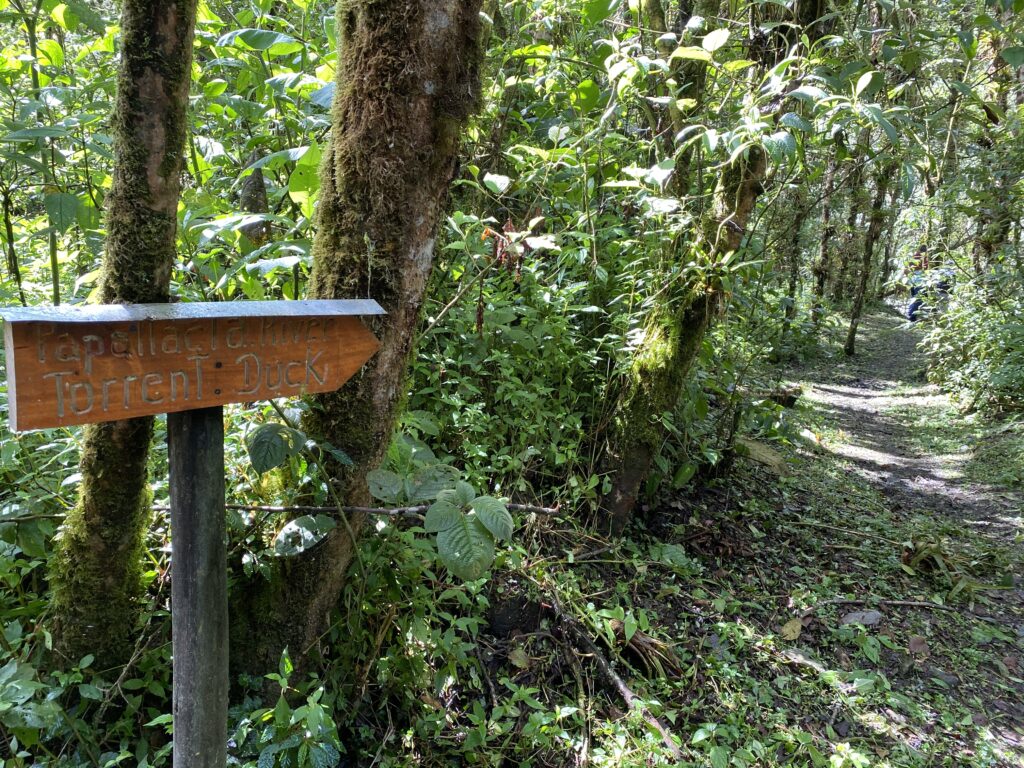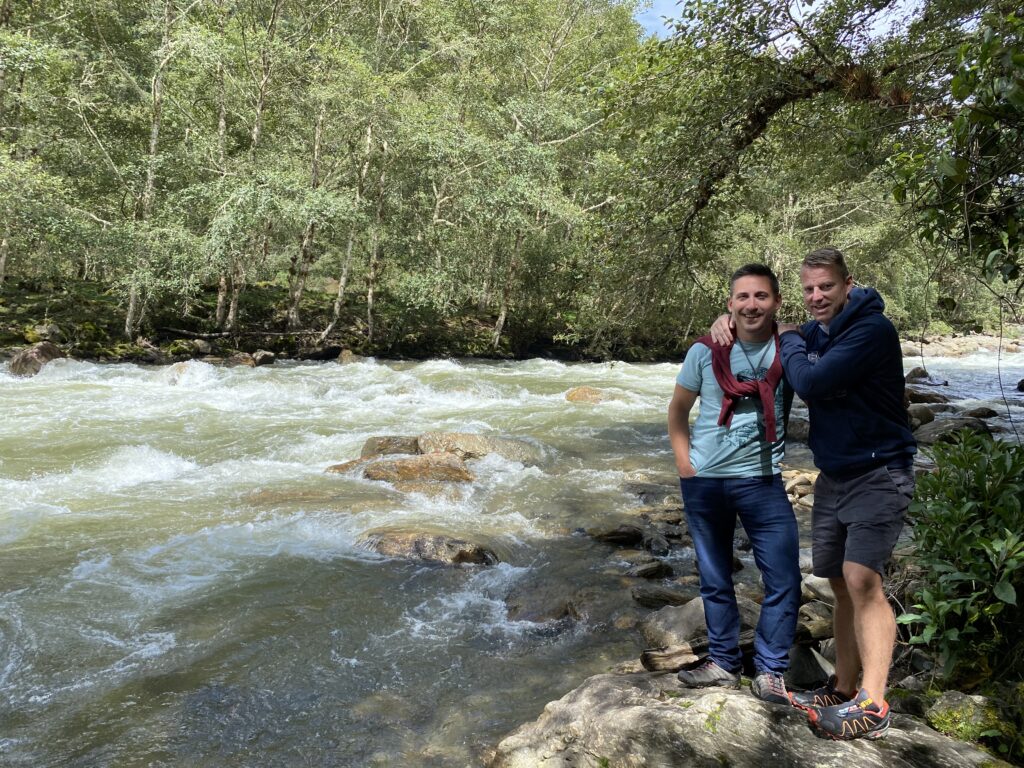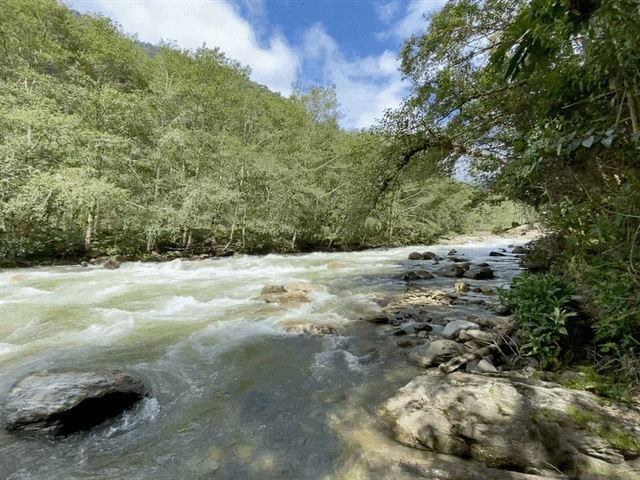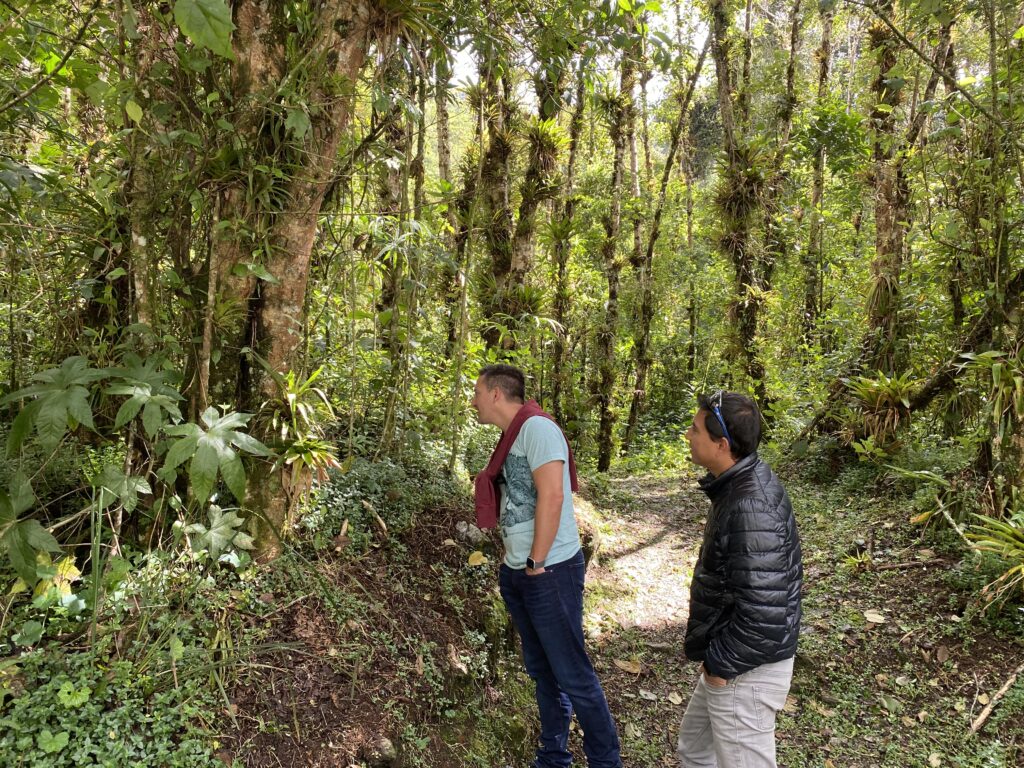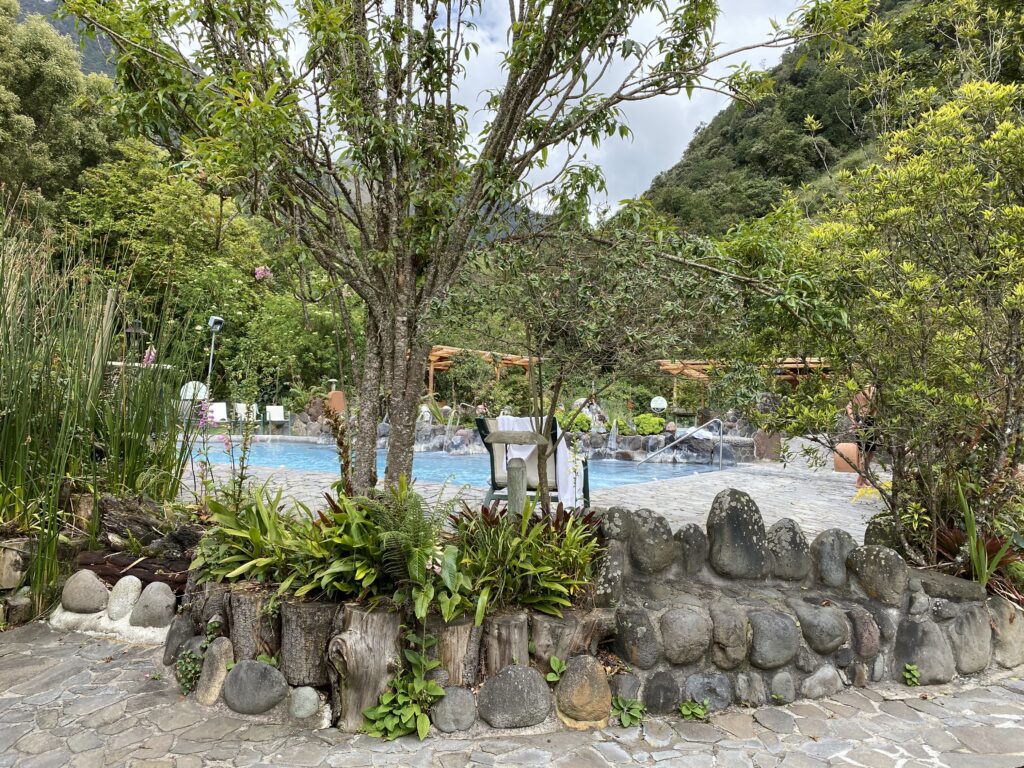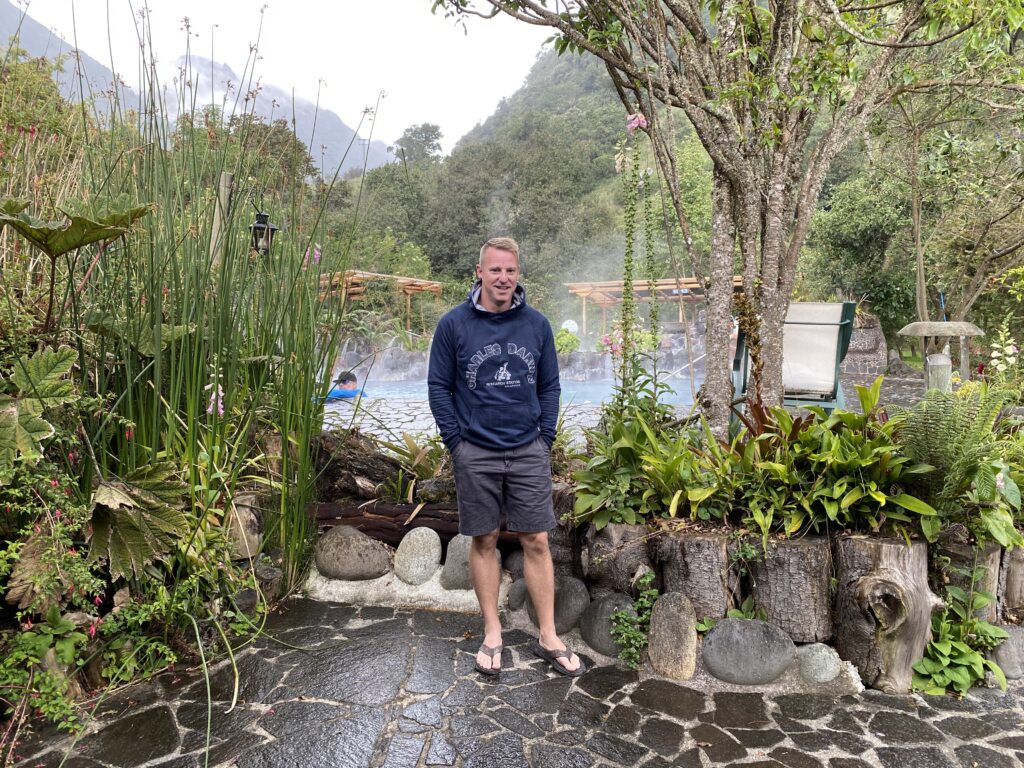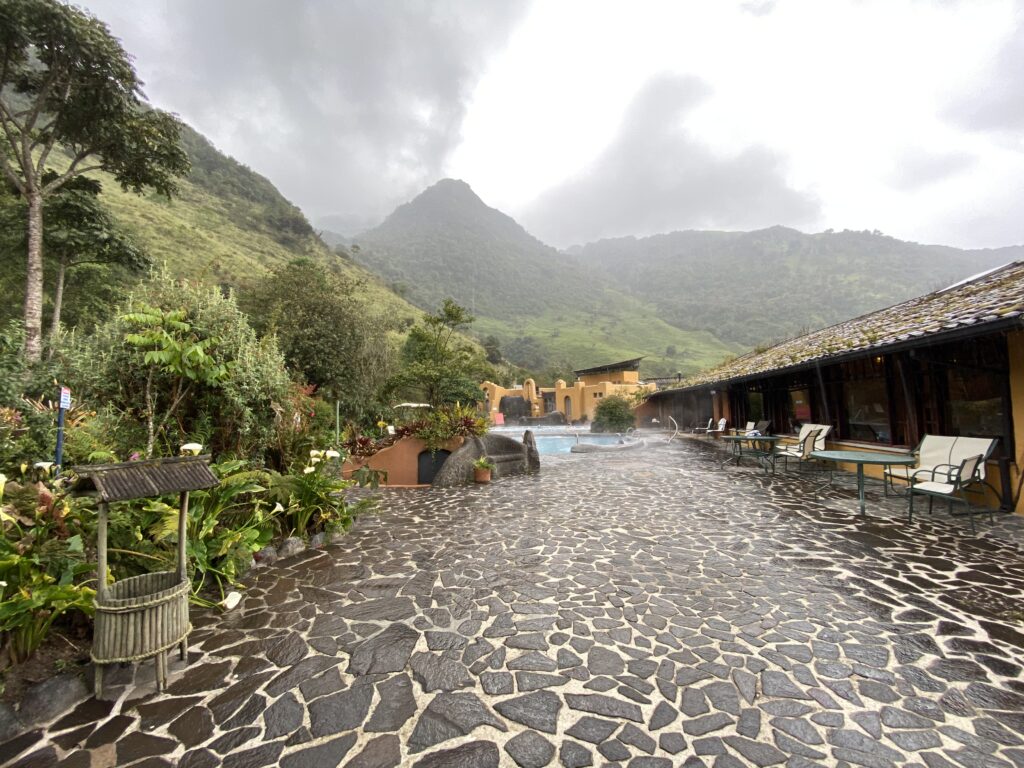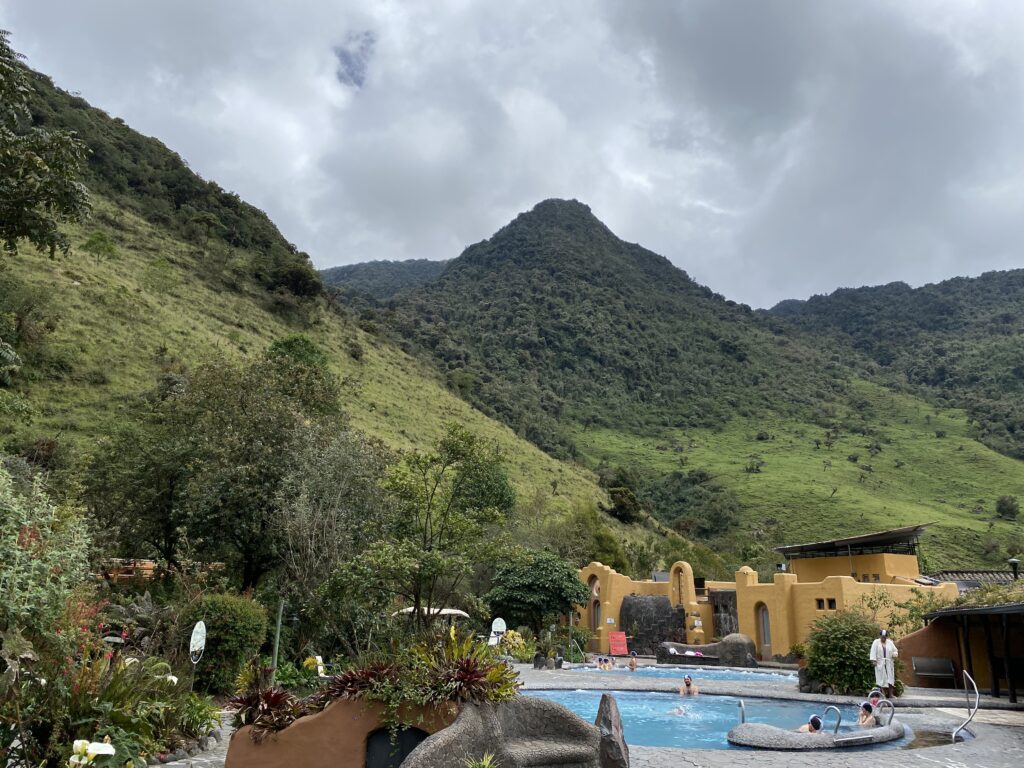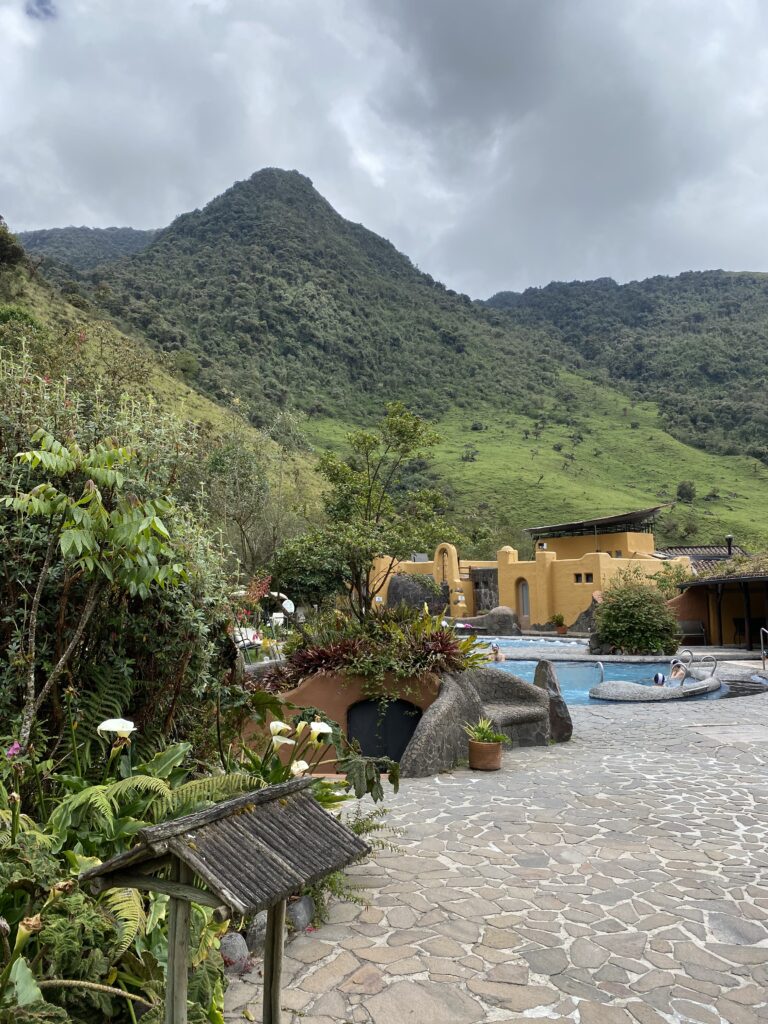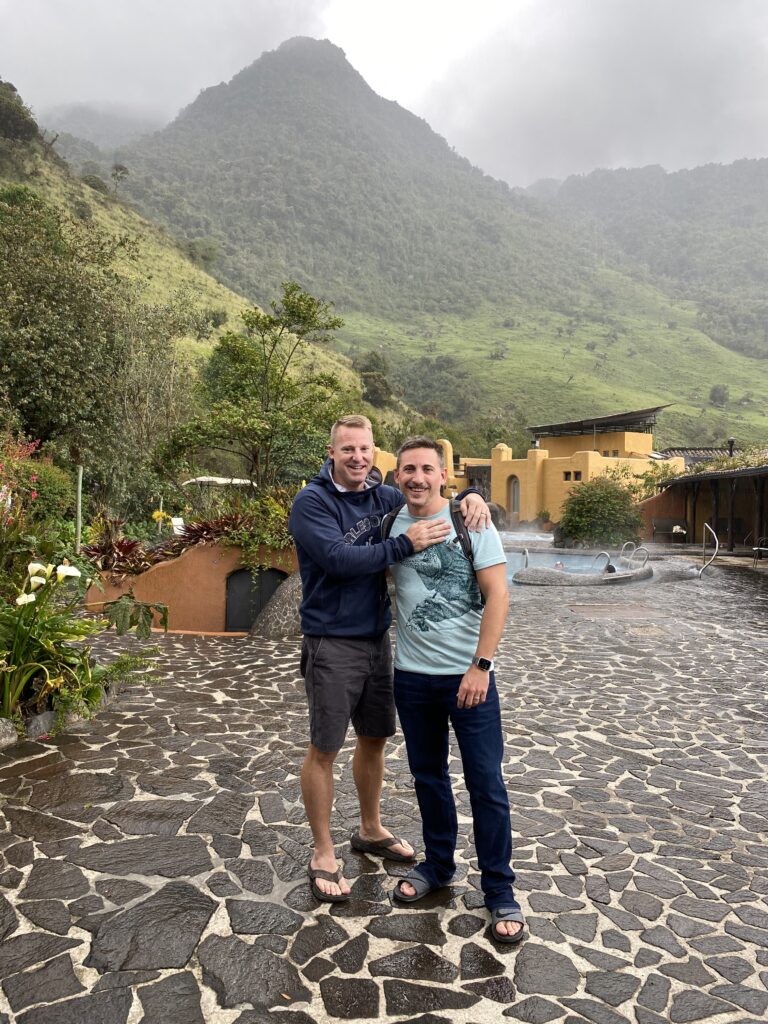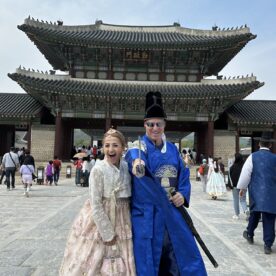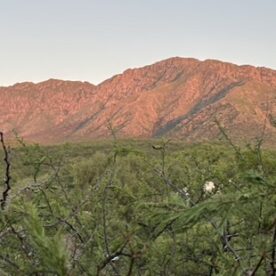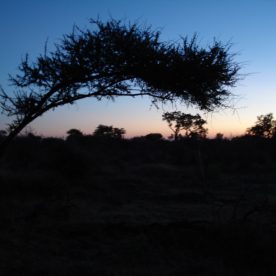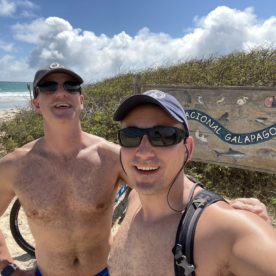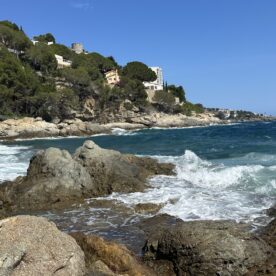New Year’s Adventure in Ecuador
As our time in the Galápagos drew to a close, we reluctantly packed our bags, said goodbye to the sea lions, and made our way to Baltra Airport for our flight back to mainland Ecuador. The Galápagos had been a once-in-a-lifetime experience, but now it was time to discover what the mainland had in store, starting with the historic heart of Quito.
After touching down in Quito, we transferred straight to the city’s historic center, a UNESCO World Heritage Site bursting with colonial charm. Our home for the next few nights was the stunning Hotel Carlota, a boutique gem nestled in the heart of Old Town. With its blend of modern design and historical architecture, it was the perfect place to unwind and transition from the natural wonders of the Galápagos to the cultural treasures of the city. Arriving late, we indulged in the complimentary champagne in our stylish room before heading down to the hotel’s award-winning restaurant, where we savored a delicious meal in the intimate, elegantly designed lobby—a perfect start to our Quito adventure.
After dinner, despite the late hour, we felt the need to stretch our travel-weary legs. We wandered through the narrow, cobblestone streets of Old Town, which are lined with beautifully preserved 16th and 17th-century buildings. Our stroll naturally led us to Plaza Grande, the city’s main square, framed by the Presidential Palace, the Metropolitan Cathedral, and the Archbishop’s Palace. The historic charm of the area made it impossible to resist exploring, even at night.
Balancing Hemispheres and Exploring History: A Day Immersed in Quito’s Rich Heritage
Our first full day in Ecuador began with the luxury of a dedicated driver and private tour, ensuring we could explore Quito’s highlights at our own pace. Our journey started with a scenic drive out to the Intiñan Museum, located right on the equatorial line. Here, we had the unique experience of standing with one foot in each hemisphere, but it wasn’t just a photo opportunity. As we attempted to walk the exact line of the equator, we quickly discovered that maintaining balance is no small feat—thanks to the gravitational forces at play. The museum offered fascinating demonstrations and exhibits that explained the science behind this phenomenon and provided a deeper understanding of the cultural significance of the equator to the indigenous peoples.
Returning to the heart of Quito, we first made a stop at El Panecillo, a hilltop lookout offering panoramic views of the city sprawling beneath the Andean peaks. El Panecillo, which means “little bread loaf” in Spanish due to its shape, is crowned by the towering statue of the Virgin of Quito, one of the few depictions of the Madonna with wings. The statue, made of 7,000 pieces of aluminum, was inspired by a smaller sculpture found in the Church of San Francisco. This iconic spot has a rich history, dating back to pre-Columbian times when it was believed to be a site of worship for the indigenous Quitu people. The breathtaking vista allowed us to fully appreciate the rugged, mountainous beauty of Quito before continuing our journey.
Our next stop was The Church and Convent of Saint Francis, known as “Iglesia y Convento de San Francisco,” is one of Quito’s most iconic landmarks and the oldest and largest religious complex in the city. Spanning over 13 city blocks, the sprawling complex was constructed over 150 years, beginning in 1536, shortly after the Spanish conquest. The church’s baroque facade, with its intricate stone carvings and imposing twin towers, is a stunning example of colonial architecture. Inside, the church is a treasure trove of art and history, with elaborate altars, gilded ceilings, and an impressive collection of colonial-era paintings by the Quito School. The convent, with its serene cloisters and beautiful courtyards, offers a peaceful retreat from the bustling city outside. It is said that the church was built over an ancient Incan temple, adding a layer of mystique to its already rich history. The Church and Convent of Saint Francis is not just a place of worship but a living museum that tells the story of Quito’s colonial past and its deep-rooted religious traditions.
From there, we strolled to the nearby Plaza de la Independencia, also known as Plaza Grande, the bustling heart of Old Town. Surrounded by some of Quito’s most significant buildings—the Presidential Palace, the Metropolitan Cathedral, and the Archbishop’s Palace—the square was alive with activity, from local vendors selling traditional, handmade chocolate to people simply enjoying the day.
Soaring Heights and Unique Sights: Exploring the Basilica del Voto Nacional
Our day continued with a visit to the Basilica del Voto Nacional, one of the most impressive neo-Gothic structures in South America and a true architectural marvel. Construction of the basilica began in 1892, and although it was officially inaugurated in 1988, it remains technically “unfinished.” Local legend has it that when the basilica is finally completed, it will signal the end of the world—so perhaps it’s best left as is!
The basilica is a fascinating blend of old-world Gothic design and Ecuadorian culture. Its towering spires, which reach 377 feet into the sky, make it the tallest church in Ecuador. But what truly sets the Basilica del Voto Nacional apart are its gargoyles. Unlike the traditional gargoyles seen in European cathedrals, these are modeled after the unique wildlife of the Galápagos Islands. As you walk around the exterior, you’ll spot stone-carved iguanas, tortoises, and even blue-footed boobies peering down at you—an homage to Ecuador’s rich biodiversity.
Inside, the basilica is just as awe-inspiring. The intricate stained glass windows depict scenes from the Bible alongside representations of Ecuadorian flora and fauna, creating a vibrant tapestry of color and light. As we climbed up to the bell towers—a climb not for the faint-hearted, with steep ladders and narrow passages—we were rewarded with breathtaking, panoramic views of Quito and the surrounding Andes. From this vantage point, the city’s mix of colonial and modern architecture unfolds beneath you, with the distant mountains providing a stunning backdrop. The experience was both exhilarating and humbling, offering a unique perspective on the blend of history, culture, and nature that defines Quito.
From Andean Heights to Amazonian Depths: A Day of Exploration and Relaxation
Our second day in Quito was nothing short of extraordinary, as our private tour driver took us on a journey that spanned diverse ecosystems and breathtaking landscapes. We began the day with a visit to the Antisana Ecological Reserve, nestled in the highlands of the Quijos region in Napo province. This vast reserve, named after the towering Antisana volcano, is a haven for wildlife and one of the most pristine ecological areas in Ecuador. Antisana is particularly renowned as a sanctuary for hummingbirds, with dozens of species darting through the air, their iridescent feathers catching the light as they feed on the abundant flowers. The reserve’s rugged terrain offered us spectacular views of the mountains that cradle the headwaters of the Amazon River.
Leaving the highlands behind, we descended into the Amazon basin for a hike along the Papallacta River, which winds through the lush landscapes of the Cayambe-Coca Ecological Reserve. This river, fed by geothermal springs, is a tributary to the Amazon River, which originates where we were standing. The waters of the Papallacta ultimately join the mighty Amazon, embarking on a long journey through Ecuador and Brazil before finally reaching the Atlantic Ocean.
As we hiked along its banks, the landscape transformed into dense, verdant rainforest, teeming with life. The symphony of the jungle accompanied us as we explored this vibrant paradise, where every turn revealed a new wonder—from colorful tropical birds to the rustle of unseen creatures in the undergrowth. The nearby Papallacta Hot Springs added a layer of tranquility to the experience, promising a soothing retreat after our jungle exploration.
Nestled amidst the serene Andean scenery, the Termas Papallacta Wellness Spa offered us the perfect retreat for rejuvenation. A key feature of the spa is its series of natural hot springs, which provided an ideal way to unwind after a day of jungle exploration. The Papallacta Hot Springs are not only a natural wonder but also a hotspot (pun intended) for luxury wellness tourism. These geothermal springs are heated by the volcanic activity beneath the Andes, reaching temperatures between 36°C and 38°C (96°F to 100°F). The mineral-rich waters are known for their therapeutic properties, believed to soothe aching muscles, improve circulation, and even relieve stress. In recent years, a surge in wellness tourism has led to the development of upscale wellness centers and spas around these hot springs, catering to luxury travelers seeking relaxation and rejuvenation in a stunning natural setting. As more travelers seek to combine adventure with relaxation, places like Termas Papallacta have become go-to destinations, blending the best of nature’s healing powers with the comforts of luxury amenities.
Ramiro and I took turns indulging in Termas Papallacta’s numerous hot springs, allowing the soothing warmth to seep into our travel-weary muscles, while the surrounding mountains and cloud forests created a tranquil and picturesque backdrop. In between these relaxing soaks, we treated ourselves to a variety of spa treatments, including massages and facials, that left us feeling completely refreshed and revitalized.
This day, which took us from the heights of the Andes to the depths of the Amazon, encapsulated the incredible diversity of Ecuador. It was a reminder of the country’s unique ability to offer both thrilling adventures and serene moments of relaxation—all within a single day.
As we look back on our time in Ecuador, we are filled with gratitude for the incredible diversity this country has to offer—from the unique wildlife of the Galápagos and the rich history of Quito to the awe-inspiring landscapes of the Amazon. It was a journey that touched every sense, leaving us with memories that will last a lifetime. Ecuador has truly shown us the best of what nature and culture can offer, and we depart with our hearts full and our spirits rejuvenated.
